
↠ sponsored post ↞
In May we visited the German island, Rügen, as part of the Danish promo campaign #EinSmuttur arranged by Rejselandet Tyskland in collaboration with Mecklenburg-Vorpommern. Rügens idyllic scenery and romantic atmosphere had us gobsmacked from its agricultural heartland of corn-fields & meadows, to its extensive forests and impressive rugged coastline. The combination of land and sea creates unique opportunities for both relaxing and active holiday - and with Rügen's close proximity to Denmark, it is an ideal destination for a short trip.
Rügen is the largest island (926 km²) in Germany and belongs to the federal state Mecklenburg-Vorpommern in Northern Germany, situated off the Pomeranian coast in the Baltic Sea. If you live in Denmark you can reach Mecklenburg-Vorpommern by taking the ferry from Gedser to Rostock, or you can do like we did - cross the Danish-German land border, hit the German highway and drive towards east. Vivid images of what to expect were painted in our minds first time we heard about Rügen. We were quickly sold and the island did not disappoint, when we finally made it there. Passing into the island we were met by a picturesque scenery of rolling green pastures sweeping through the countryside, small inland villages being joint by ancient tree-lined avenues and rustic manors occasionally dotting the landscape. We both instantly agreed that Rügen would be a perfect destination for a one-week biking trip to pedal along the islands impressive 200 km biking paths, but for now we had to settle with one and a half day by car.
Rügen is the largest island (926 km²) in Germany and belongs to the federal state Mecklenburg-Vorpommern in Northern Germany, situated off the Pomeranian coast in the Baltic Sea. If you live in Denmark you can reach Mecklenburg-Vorpommern by taking the ferry from Gedser to Rostock, or you can do like we did - cross the Danish-German land border, hit the German highway and drive towards east. Vivid images of what to expect were painted in our minds first time we heard about Rügen. We were quickly sold and the island did not disappoint, when we finally made it there. Passing into the island we were met by a picturesque scenery of rolling green pastures sweeping through the countryside, small inland villages being joint by ancient tree-lined avenues and rustic manors occasionally dotting the landscape. We both instantly agreed that Rügen would be a perfect destination for a one-week biking trip to pedal along the islands impressive 200 km biking paths, but for now we had to settle with one and a half day by car.
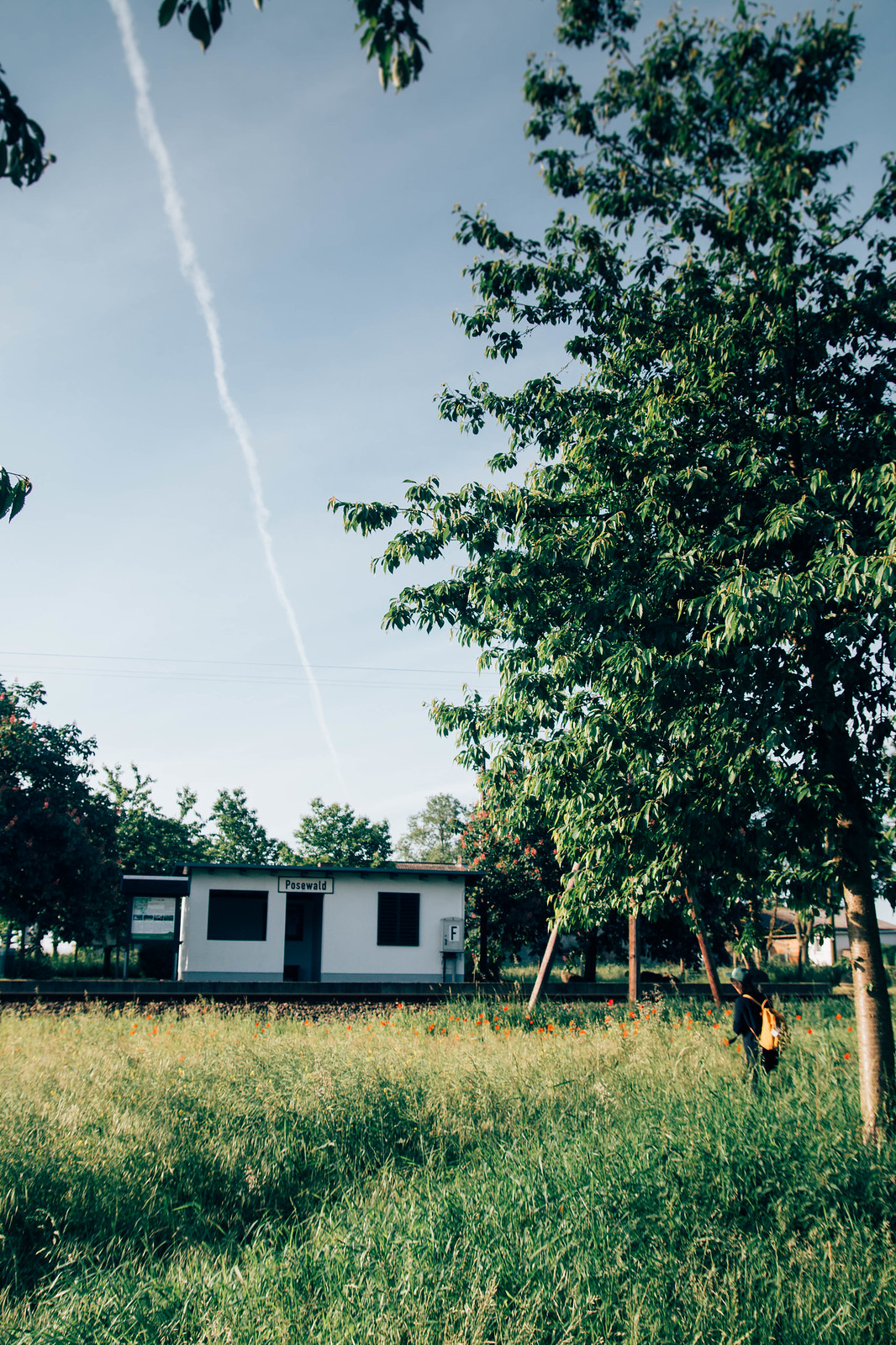
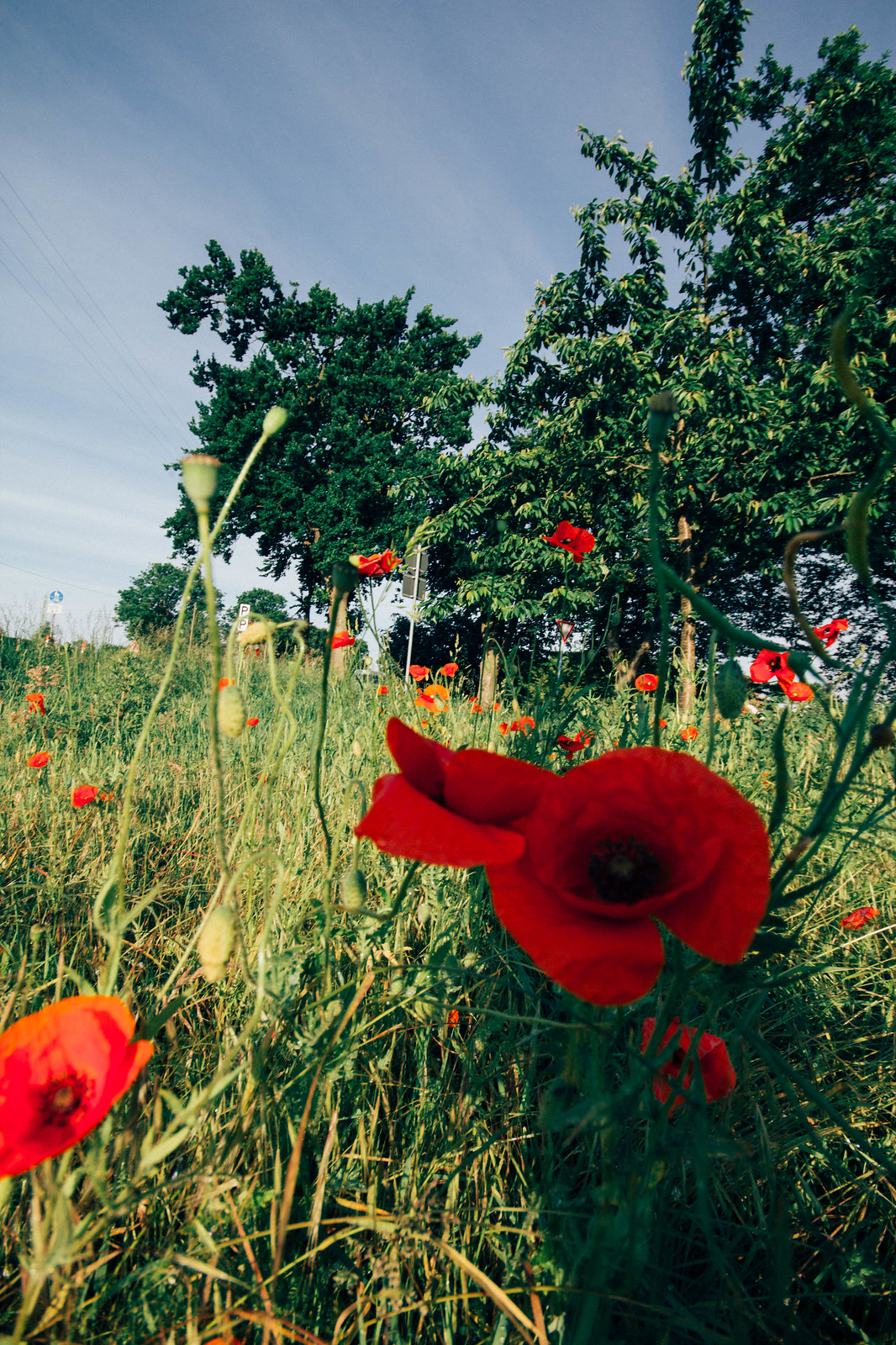
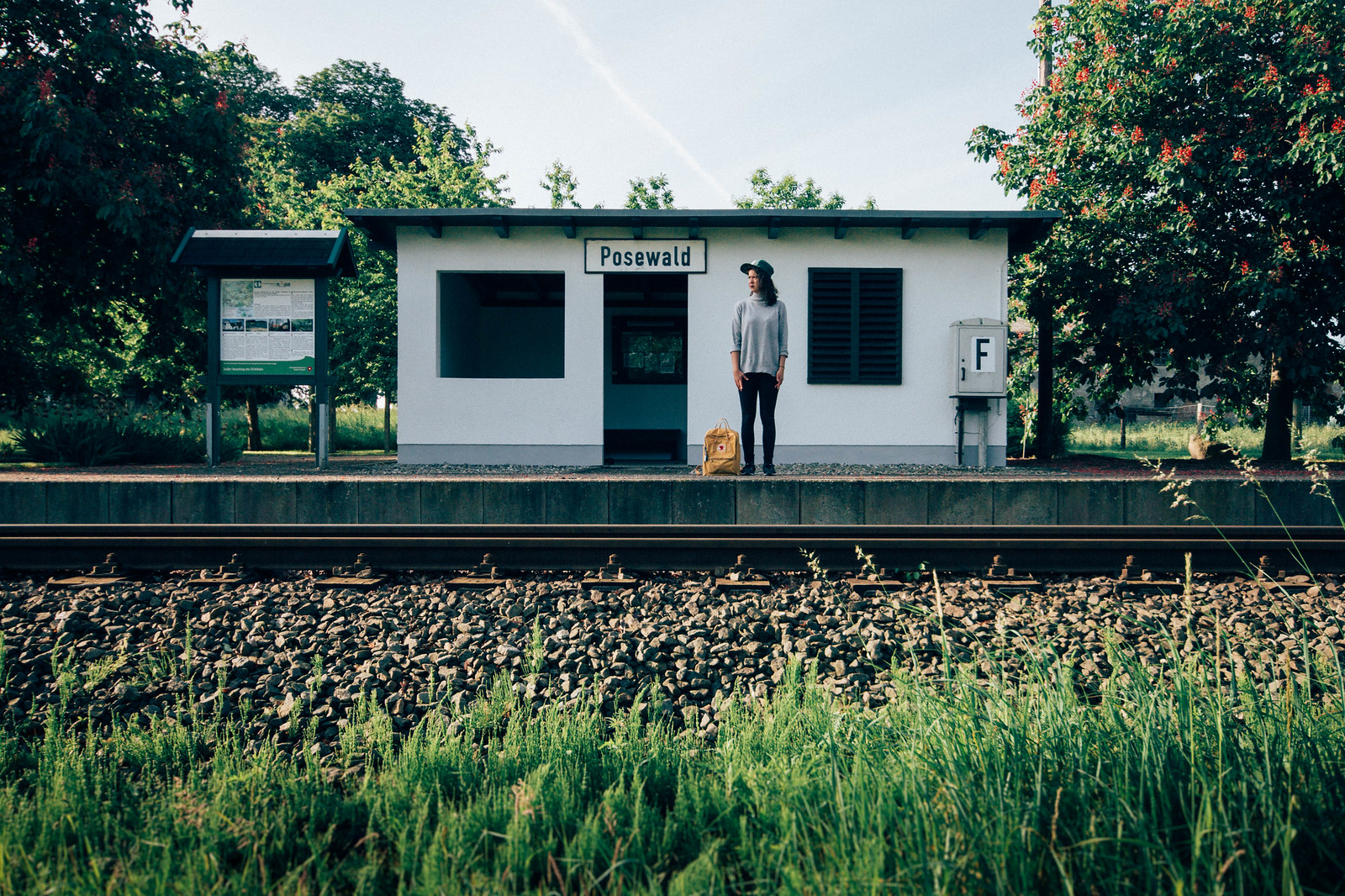
Catching a ride with Rasender Roland
First day was spent in the South-Eastern part of Rügen where the beloved Rasender Roland, a steam-powered narrow-gauge train, chuffs through the rural and blossoming pre-industrial landscapes between Putbus and Göhren. We enjoyed a short 30 min ride from Sellin Ost to Binz. The sounds and dynamics of the historic steam locomotive were hypnotic and it was such a thrill to watch the steam escape above us as we moved through nature with 30km/h in our open wagon ride. There is something wonderfully romantic about steam locomotives - and for people like us who love the musical Starlight Express, a story of Rusty the steam train who competes with various engines to become the "Fastest Engine in the World", it was difficult not to assign personality to this hissing and clanking wonder of an iron horse.
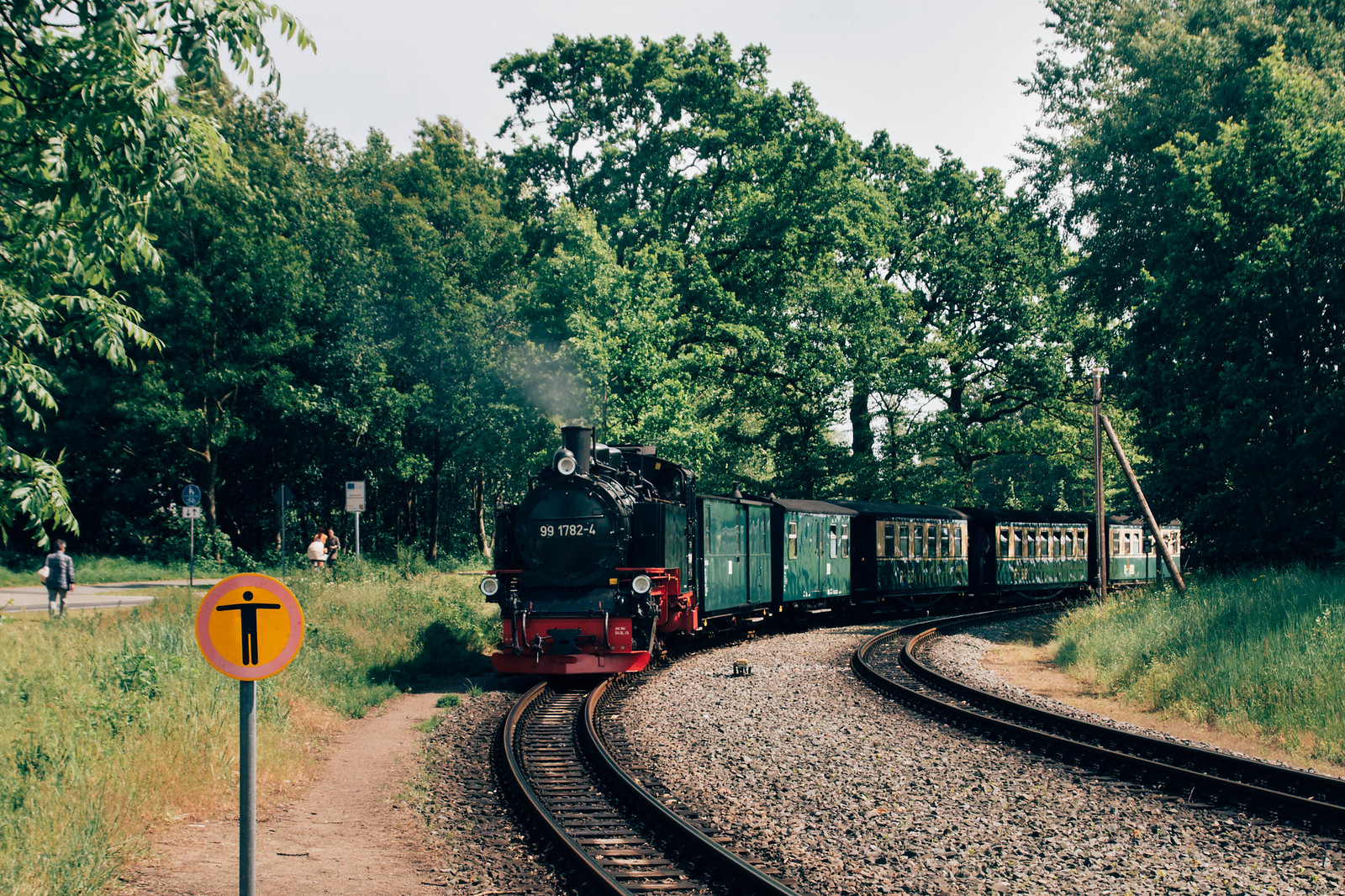
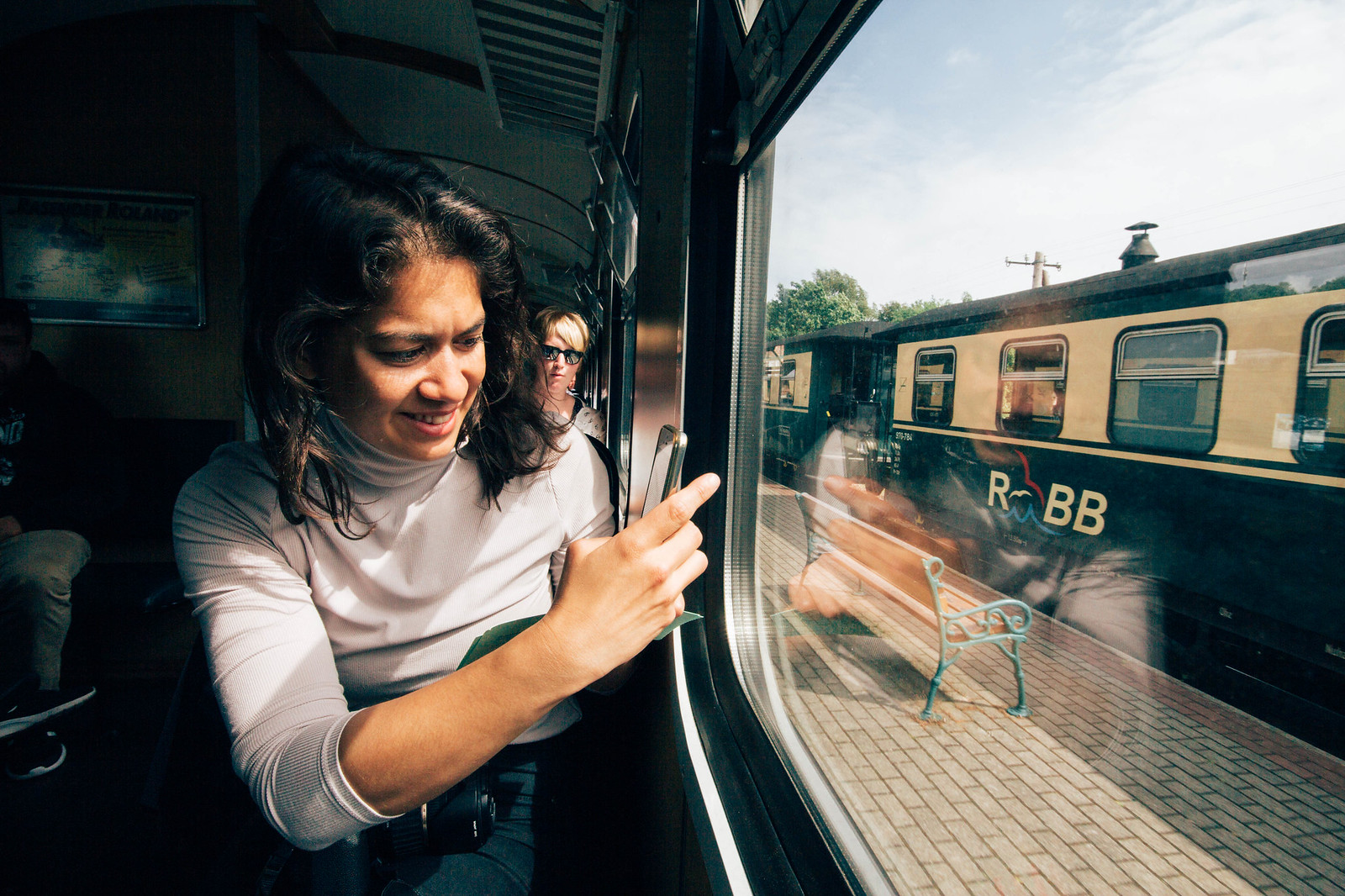
Rasender Roland took us through the extensive dark-leafy Granitz forest which is part of the Southeast Rügen Biosphere Reserve - and it even made a stop (Jagdschloss) within Granitz itself. We would have loved to jump off the train to explore the hilly terrain of push end moraines making up Granitz, and to enjoy an astonishing view across the island from the old hunting castle Jagdschloss Granitz located on the highest hill in the middle of the forest. Next time we are definitely going castle hunting and escaping into our own Grimm fairy tale within Granitz.

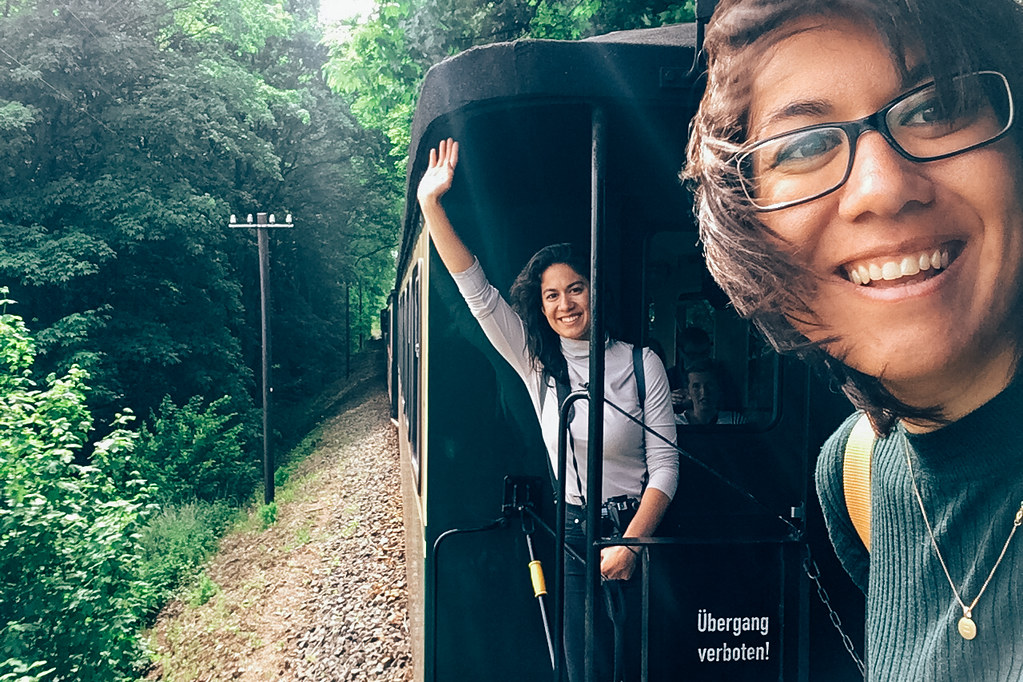
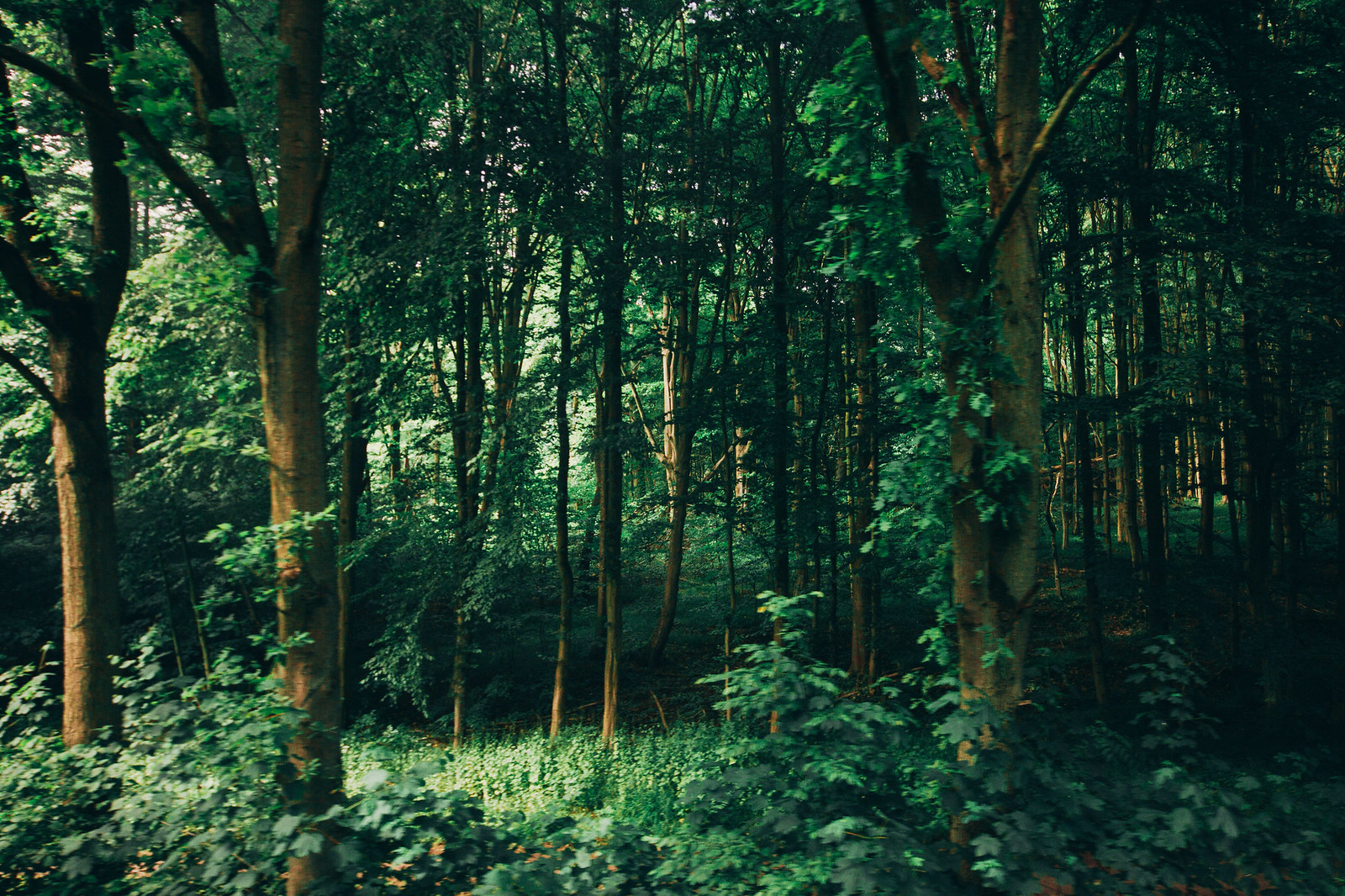
Seaside promenade strolls in Sellin and Binz
The Baltic coast of Rügen is renowned for its numerous seaside resorts and uniformly white-coated villages build in an extravagant Bäderarchitectural style. Binz and Sellin are classical examples of such white pearl coastal villages offering fashionable spa retreats.
While walking around these notable seaside resorts we felt a strong admiration for the noble manor houses and villas presenting themselves along the streets. The posh wooden buildings had a delicate appearance and were styled with ornamented porches and balconies on their facades. It was clear to see that Binz and Sellin were once catering mainly the German high society. We did not spend too much time among the white structures and instead headed towards the open sea.
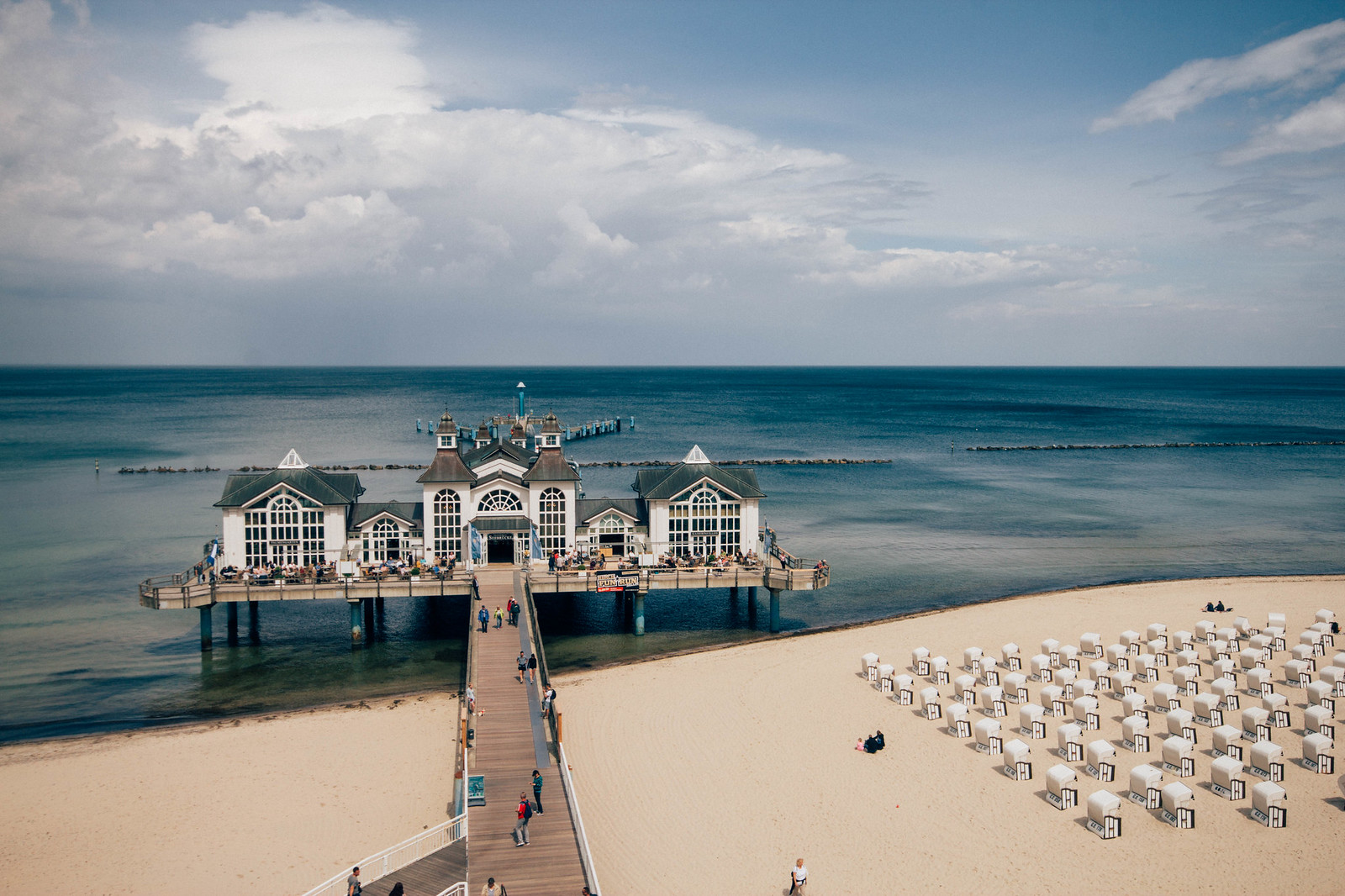
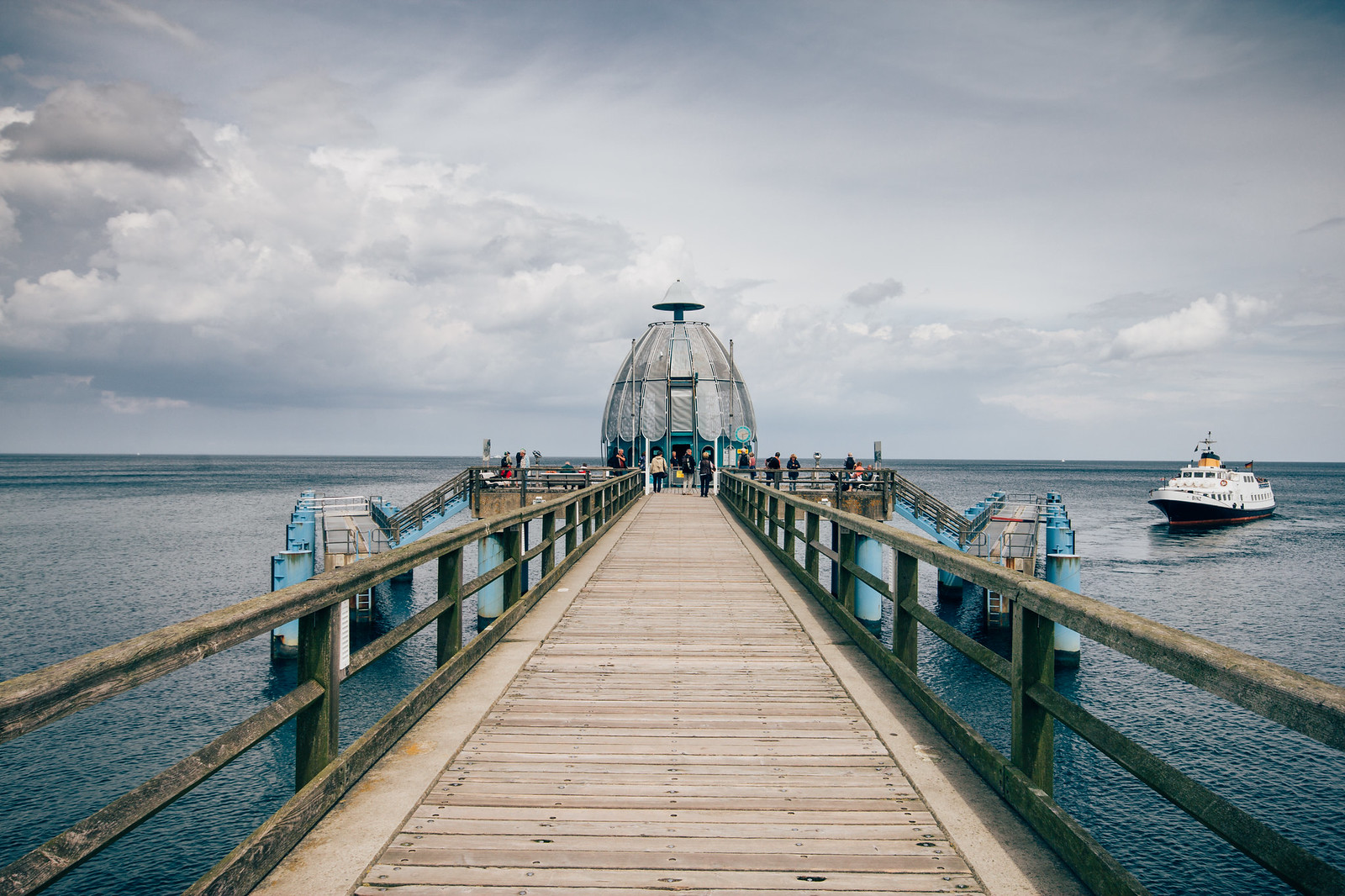
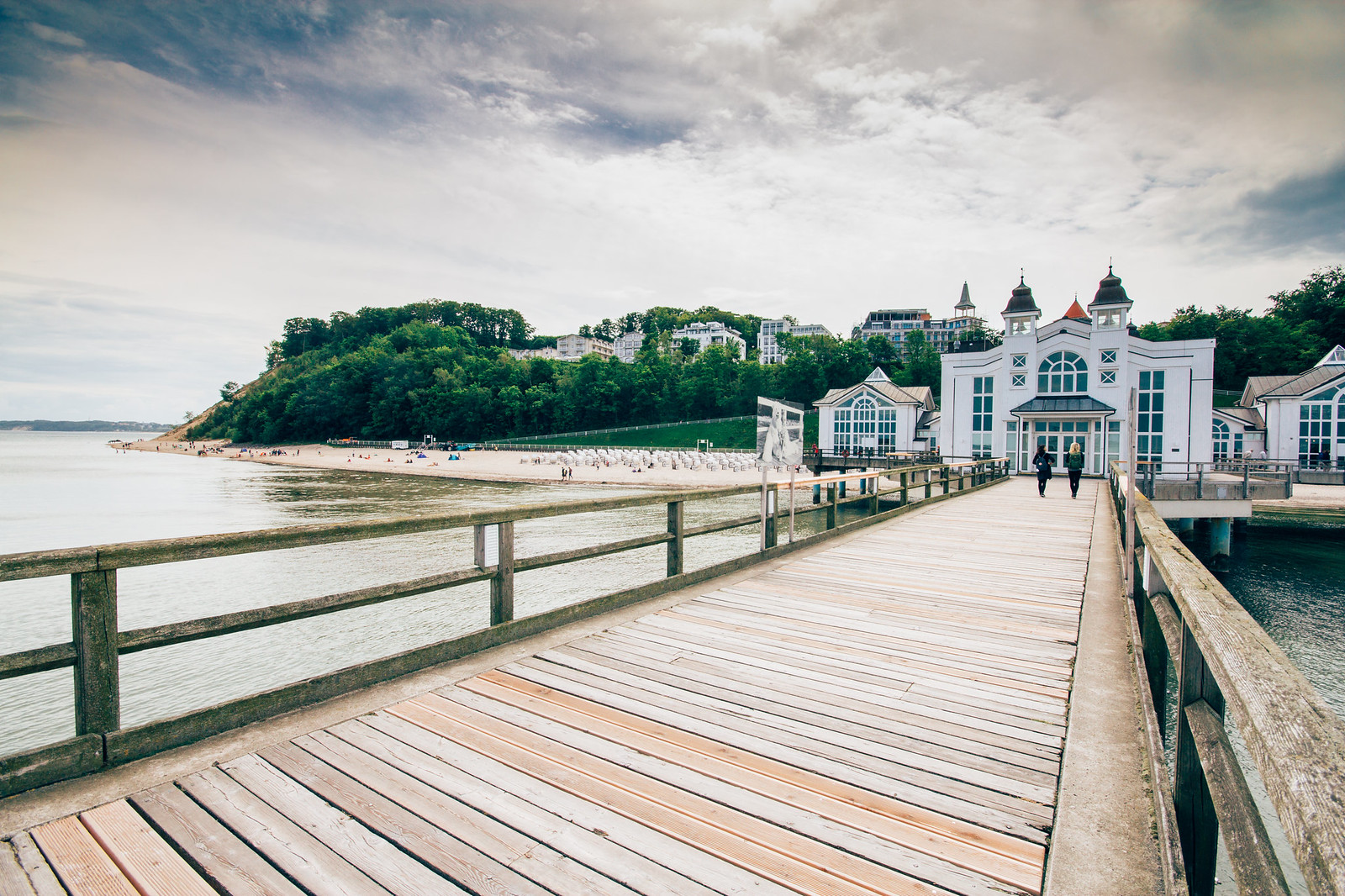
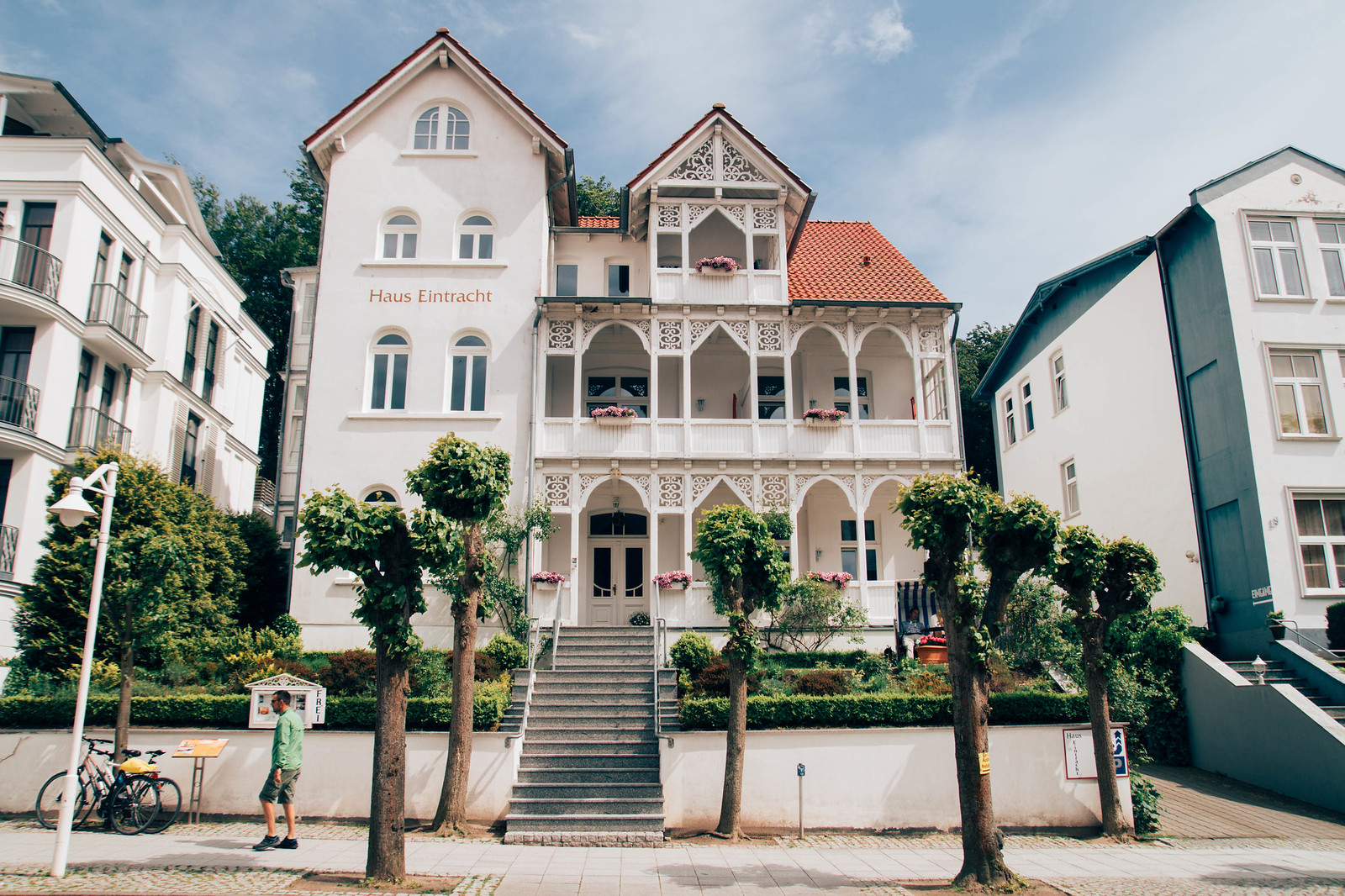
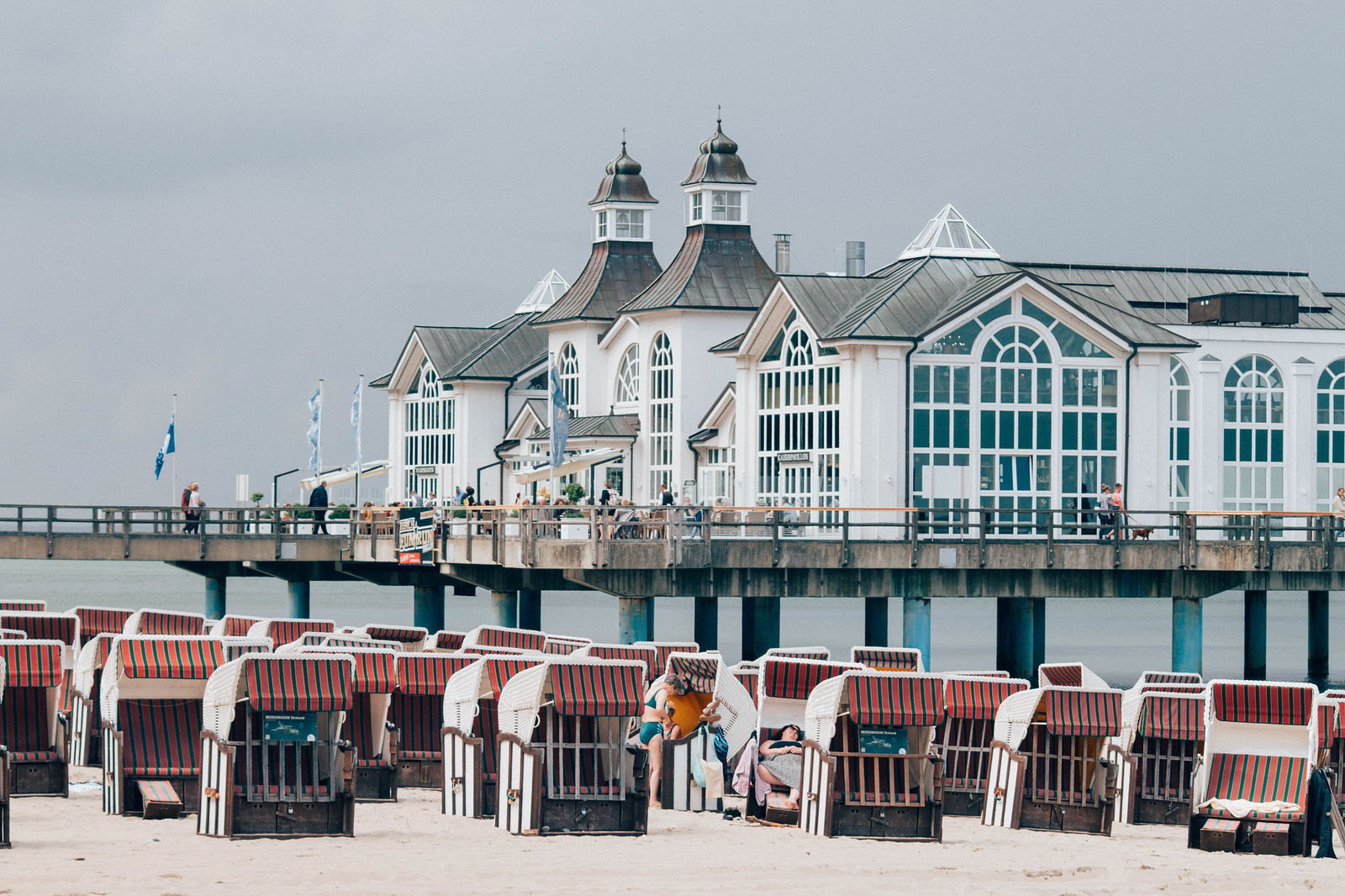
The Sellin Seebrücke, a historical antique wooden and particular picturesque pier, immediately caught our attention as we were standing at top of the steep staircase leading down to Sellin beach. The Seebrücke has seen its fare share of face lifts - and although it once stood 500 metres longs, its current 394 metres lenghts still attains its title as the longest pier on Rügen.
In Binz we went strolling along the wunderschönen beach promenade, overlooking a 5 km long white beach all scattered with typical German wicker sunchairs and one peculiar life-guard tower (Müther Rettungsturm, 1981) mostly reminiscent of a UFO.
Sellin and Binz are crowded tourist hubs during high season, and although they are not our typical destinations it was still worthwhile to experience the symbolic history carried within these beautiful white villages and fun to scout for the perfect fish brötchen (fish sandwich).

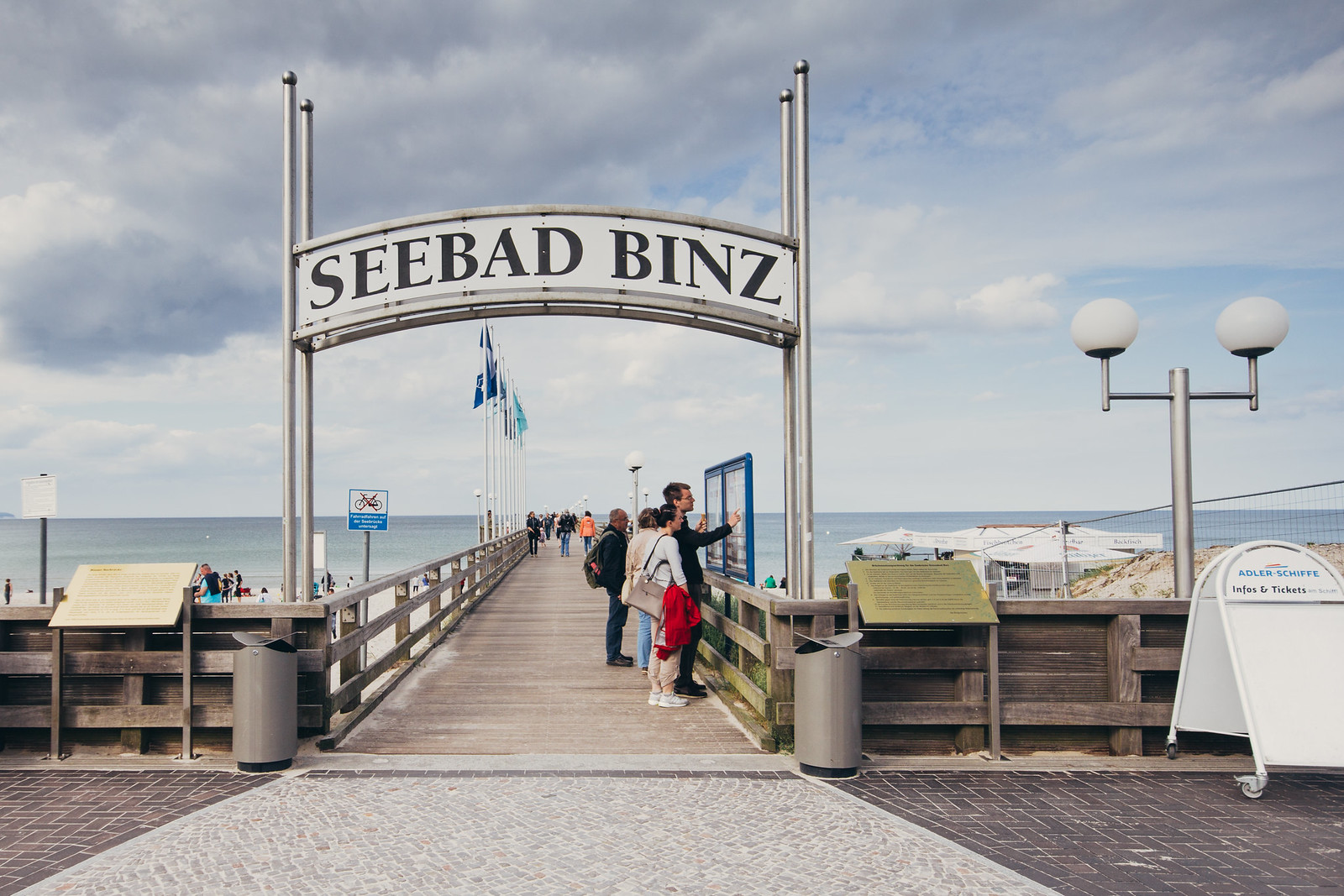
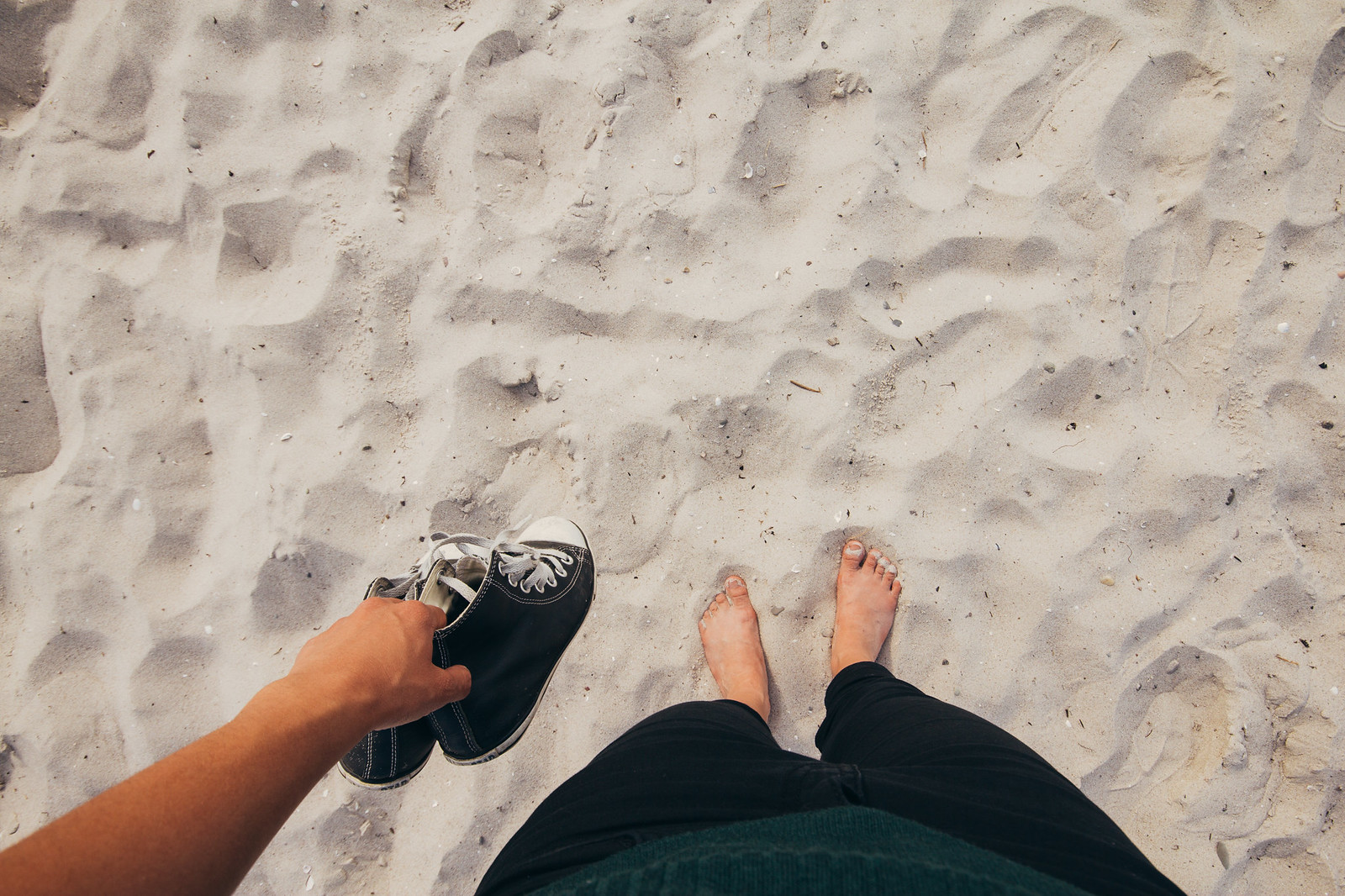
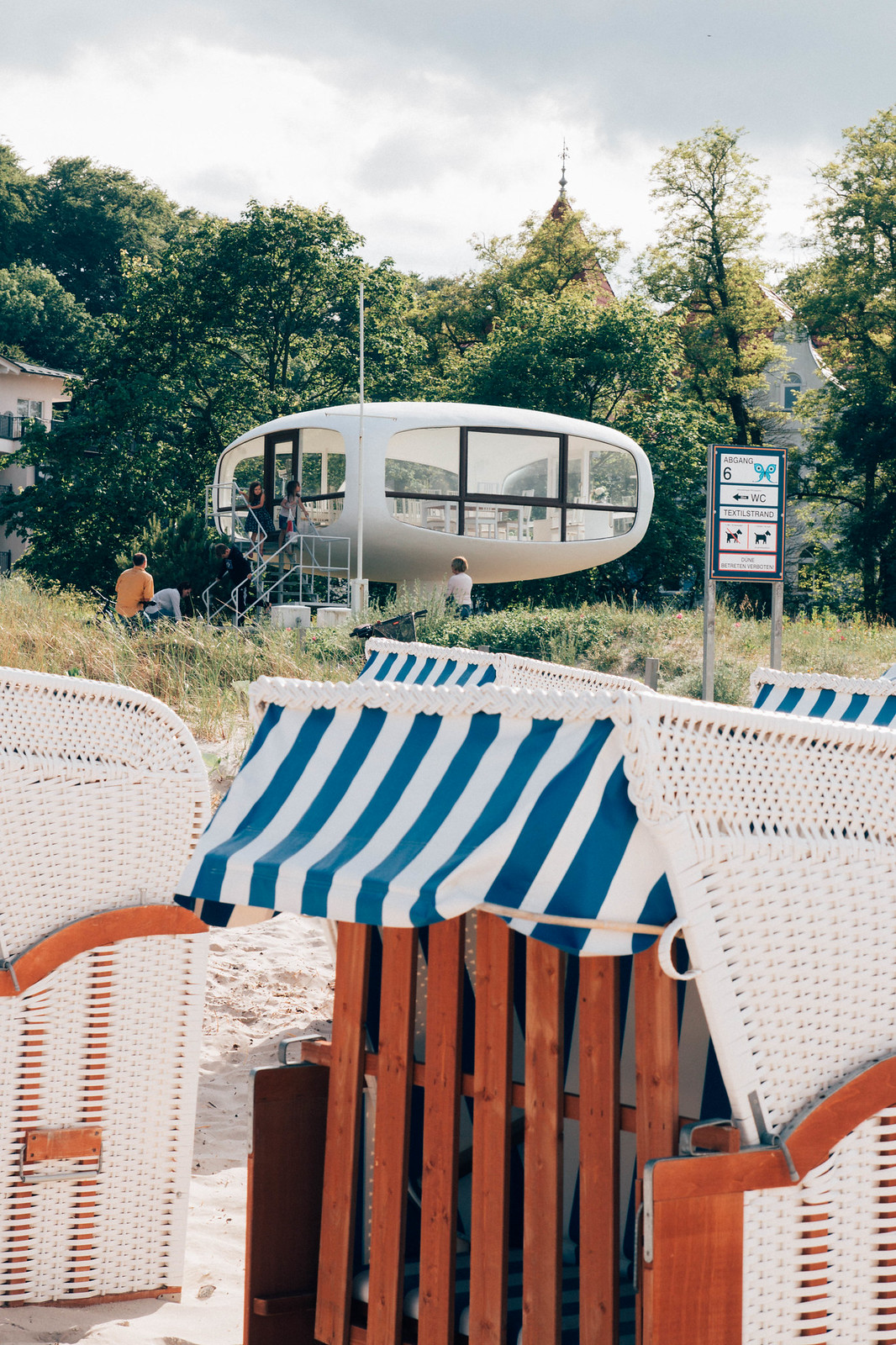
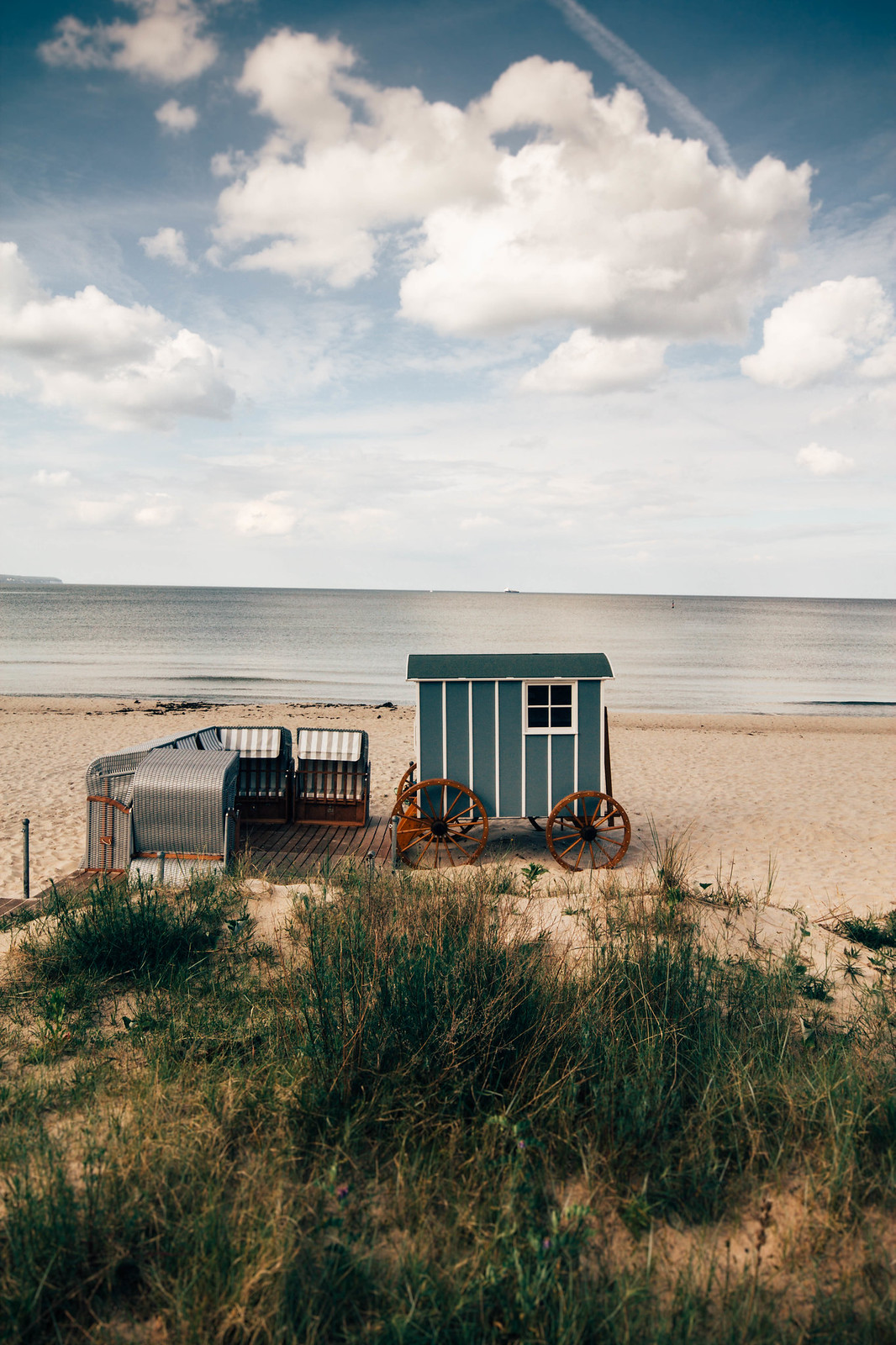
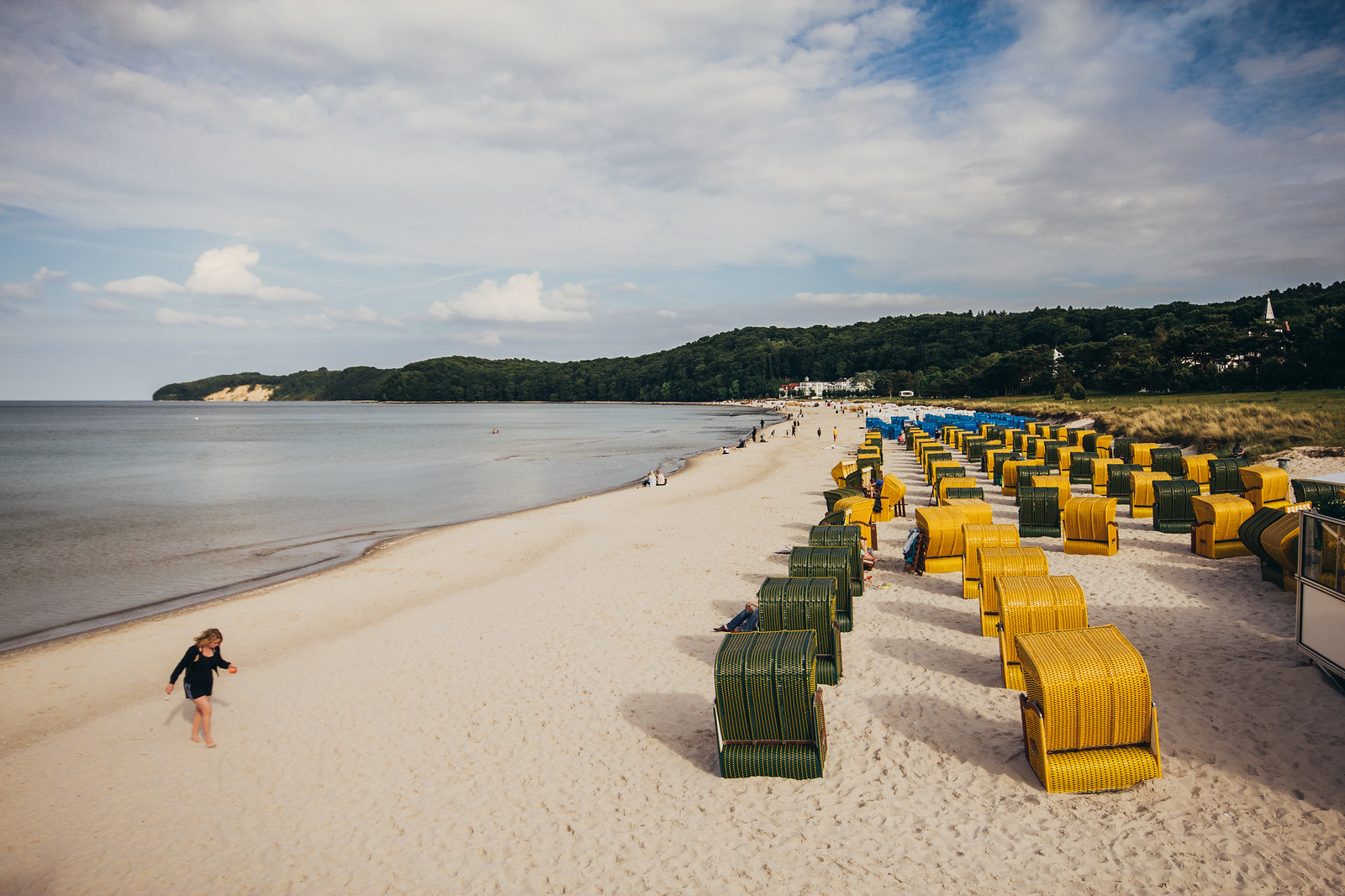
Staying at Im-Jaich Wasserferienwelt
For the evening we returned back to Im-Jaich Wasserferienwelt in Lauterback, our home for the next two nights. Im-Jaich Wasserferienwelt is situated on the Bay of Greifswald, part of the Southeast Rügen Biosphere Reserve, and is one of Im-Jaich Wasserwelten’s many fine marinas offering relaxing seaside holidays in Northern Germany. We were pleasantly surprised by the peacefullness offered here, which made it the perfect place for us to retreat after a along day of island discoveries. Im-Jaich Wasserferienwelt offers a long list of water activities and although we were keen on kayaking or going fishing in the bay, we settled with the sound of relaxing waters pulsing around us in our Maldivian bungalow-inspired pile apartment. We had a great panoramic view of Greifswald bay and from our wood deck we could watch Im-Jaich's floating houses which had a similar enchanting character to that of our own dwelling. The following morning we woke up to bright red colors shimmering through our windows and watched how our home turned into bright gold.
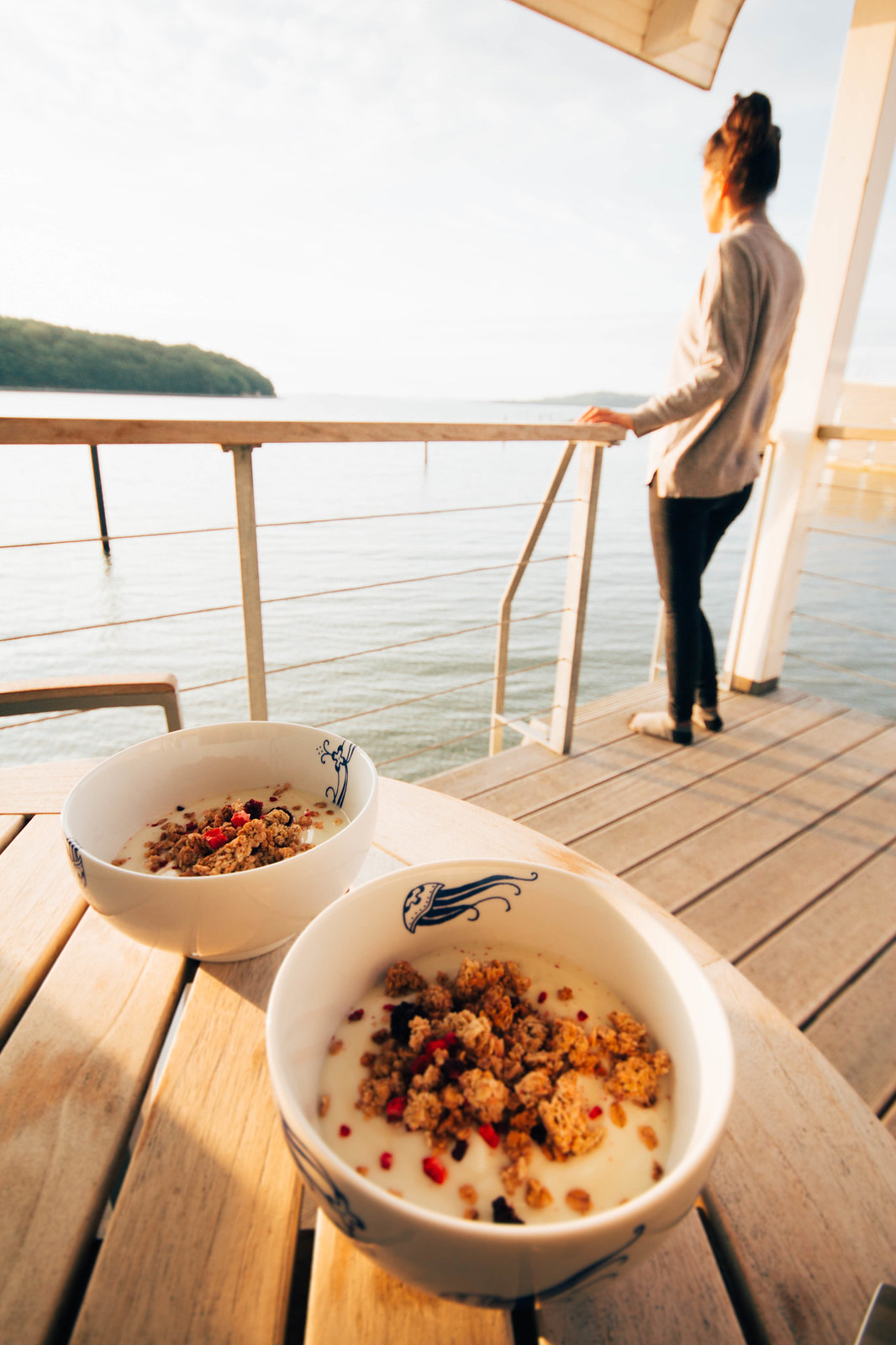
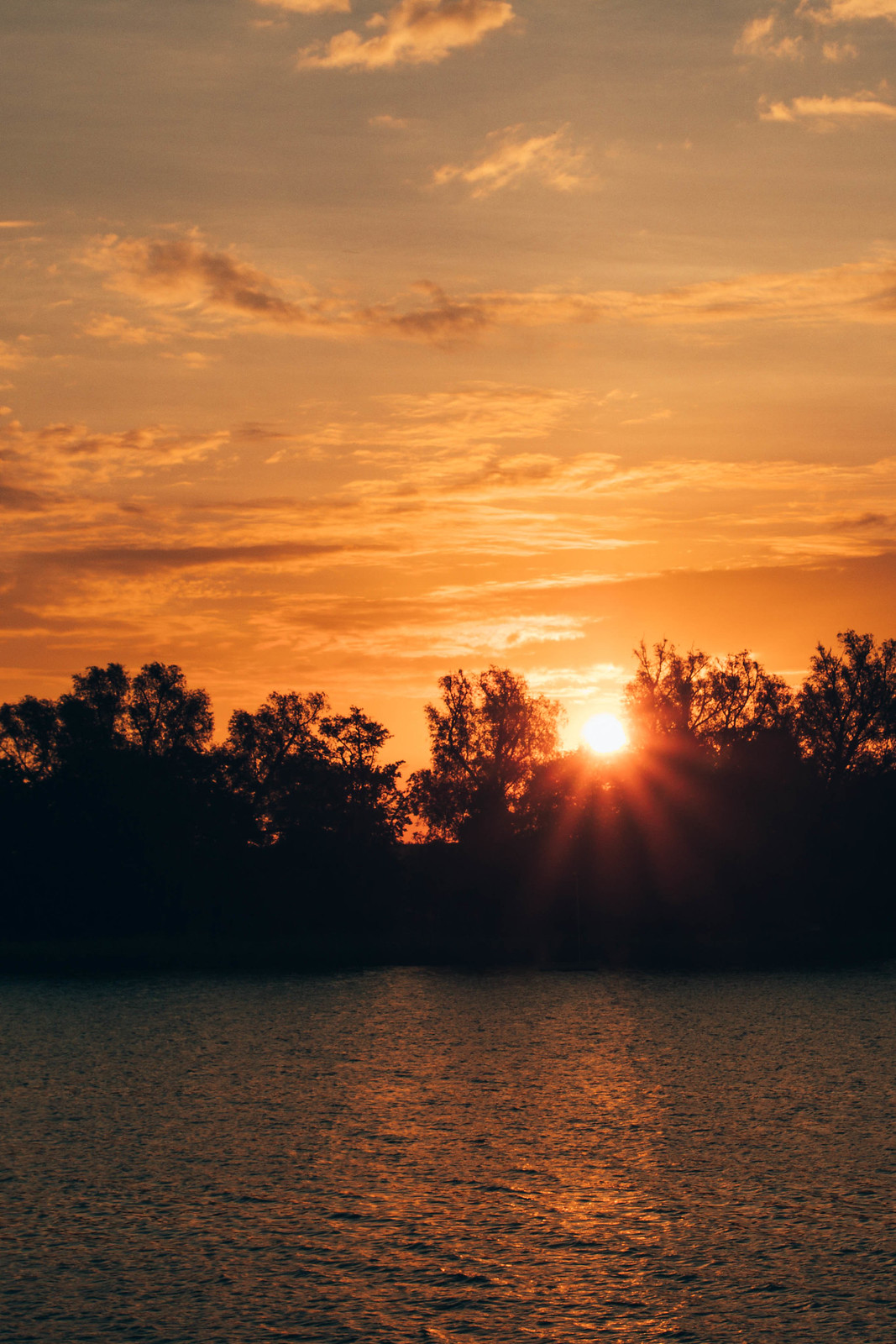
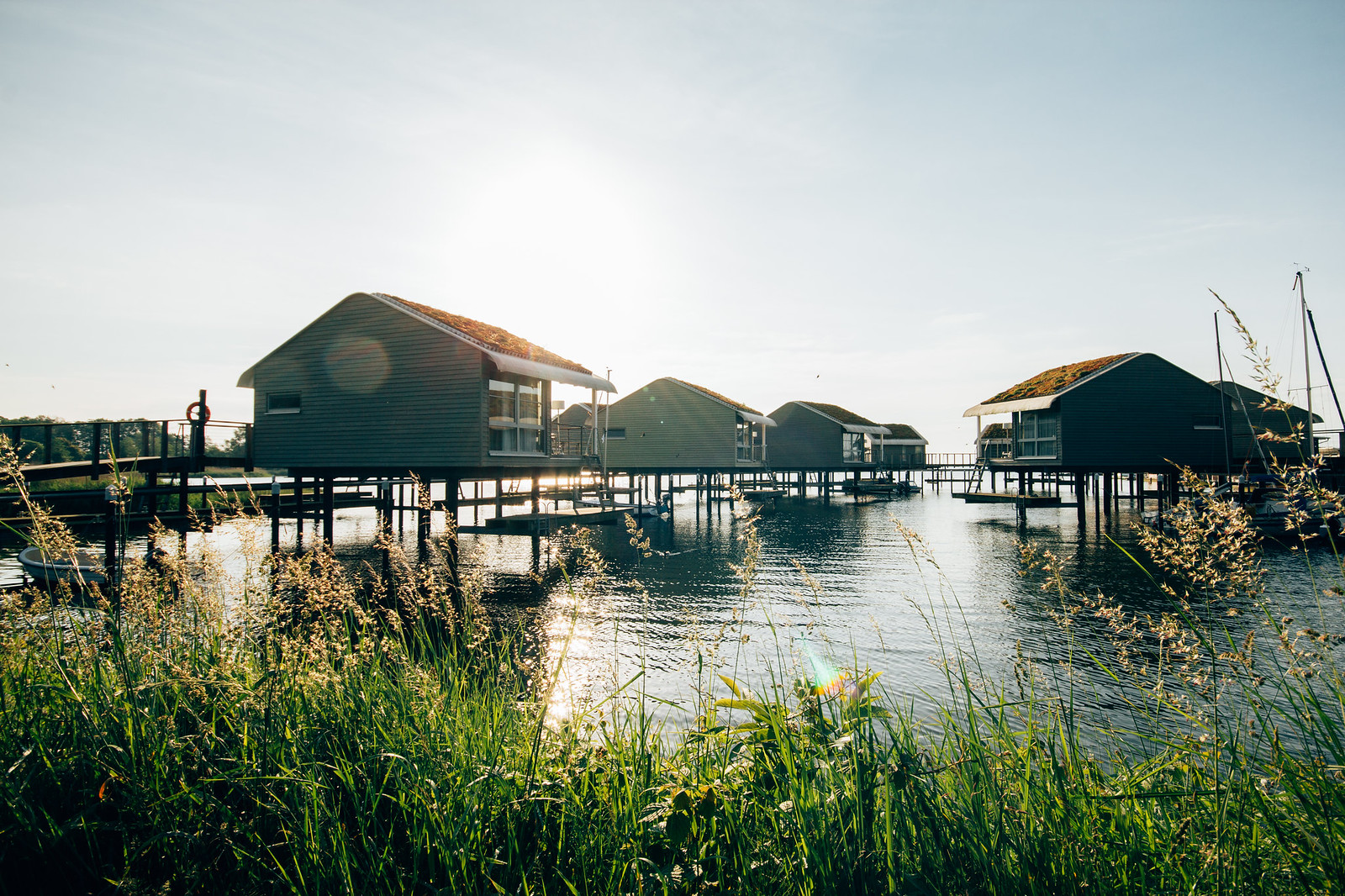
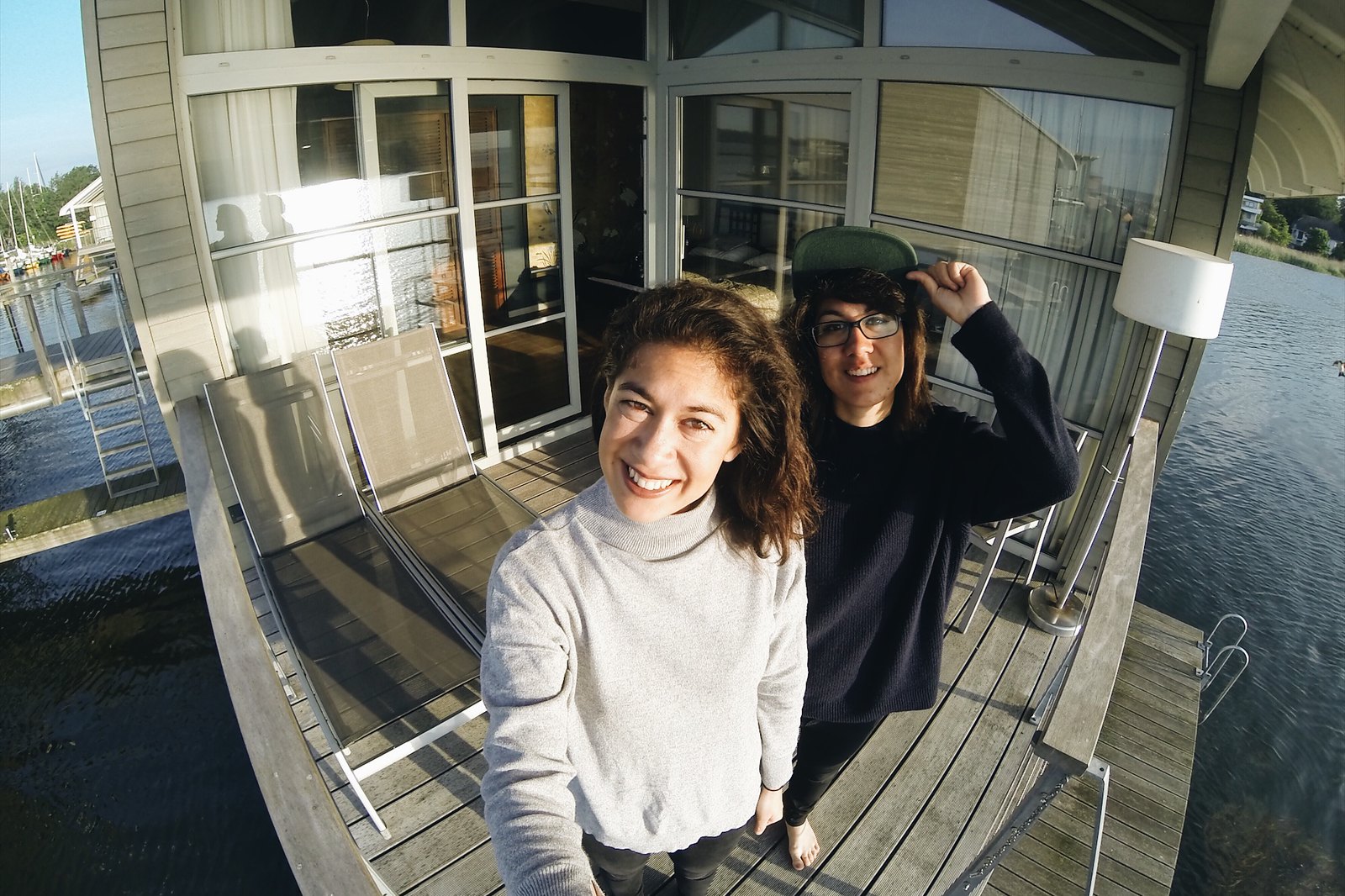
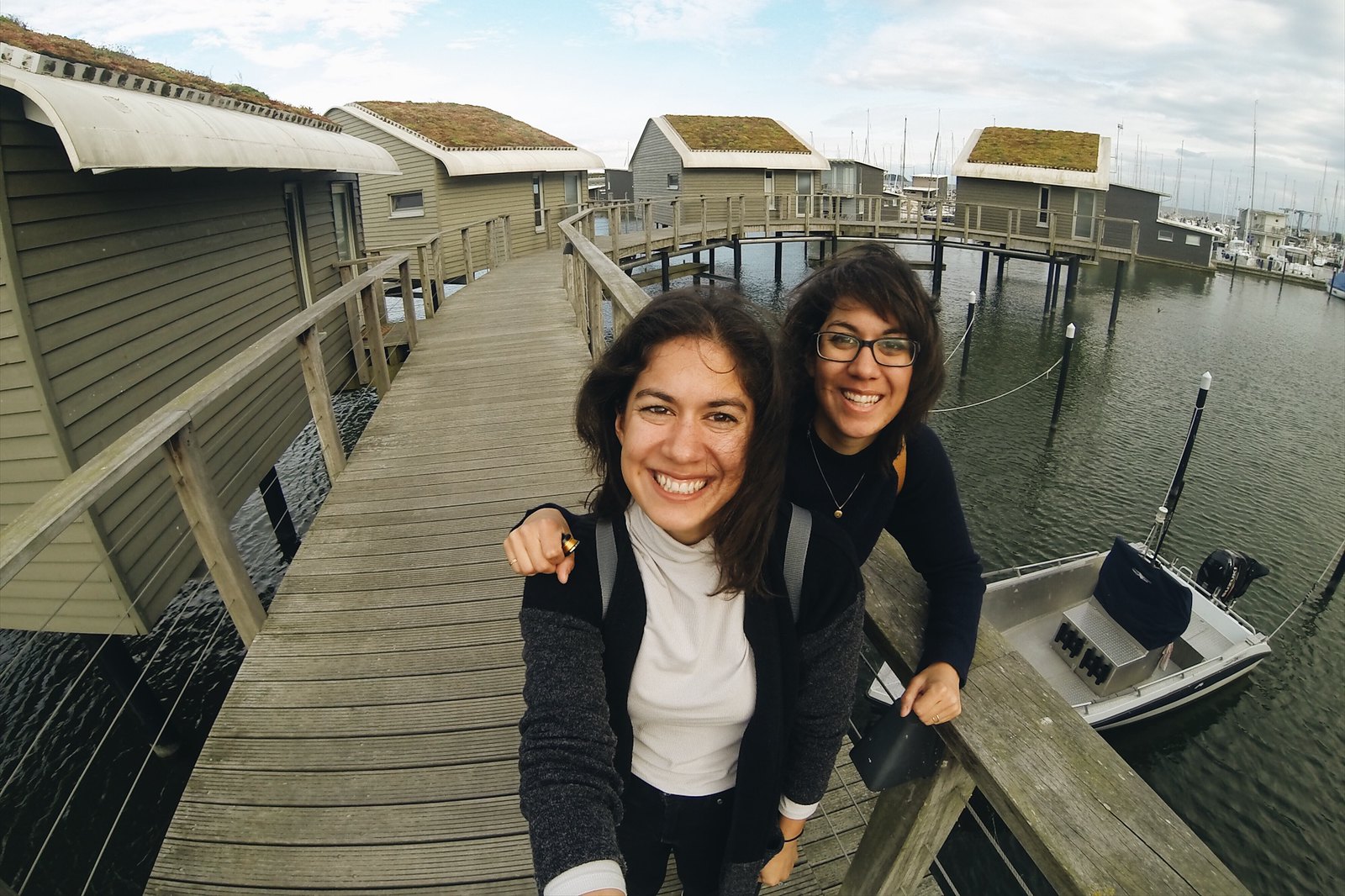
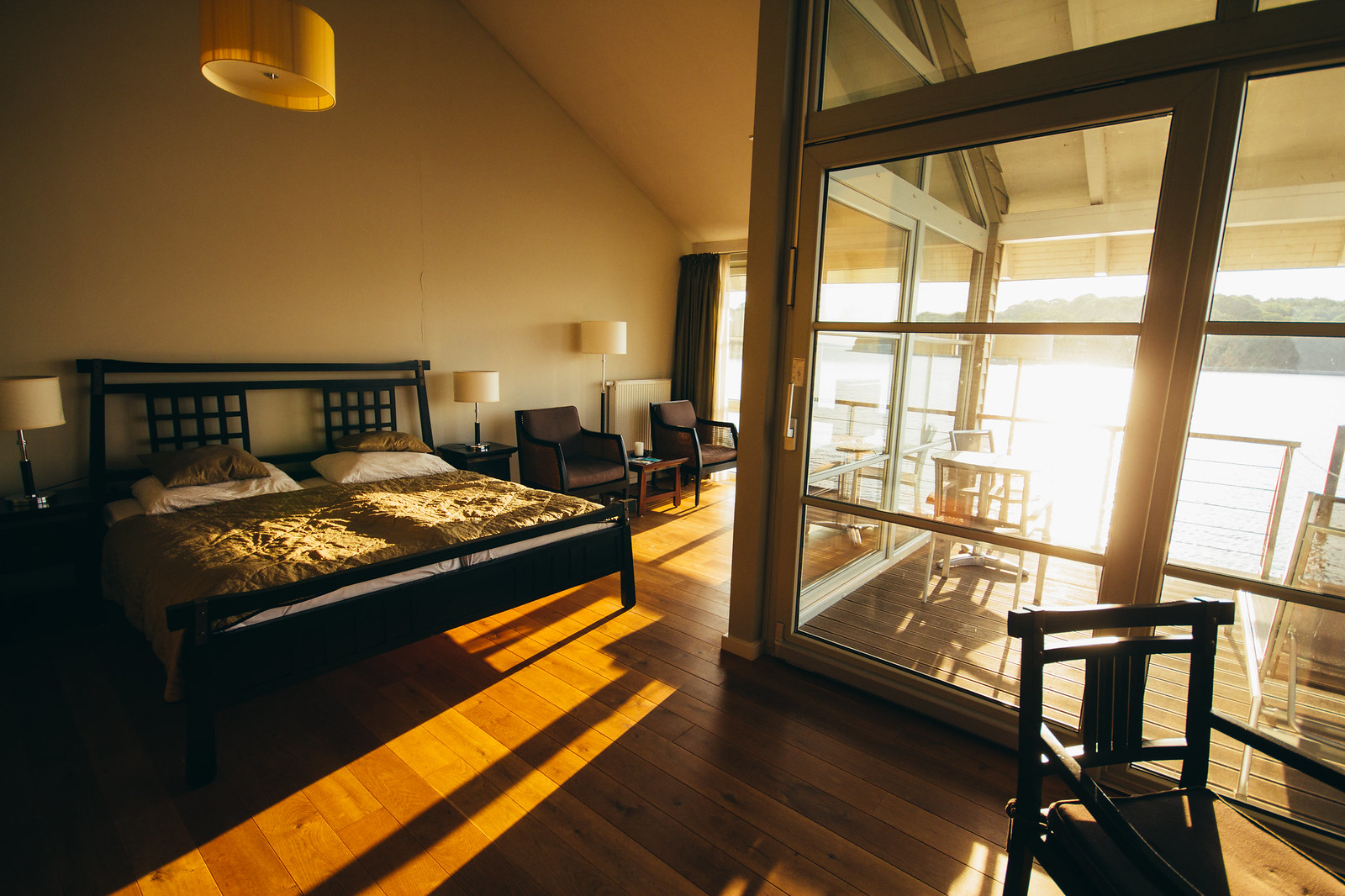
Jasmund National Park
On our second day we started off in Jasmund National Park (Unesco World Heritage Site) where we were swallowed up by the shadowland of the ancient beech forest and stood towering on top of the majestic white chalk cliffs Stubenkammer that runs along the coastline and overlooks the Baltic Sea. We hiked on the main path (8 km) from Sassnitz to Rügens highest point, Königsstuhl, a famous chalk cliff standing 118 m above sea level. The combination of fresh woodsy fragrance and sea breeze was a heavenly intoxicating wake up call, and with the unforseen summer heat jumping on us, we were similarly grateful to be shaded by the dense tree crowns.
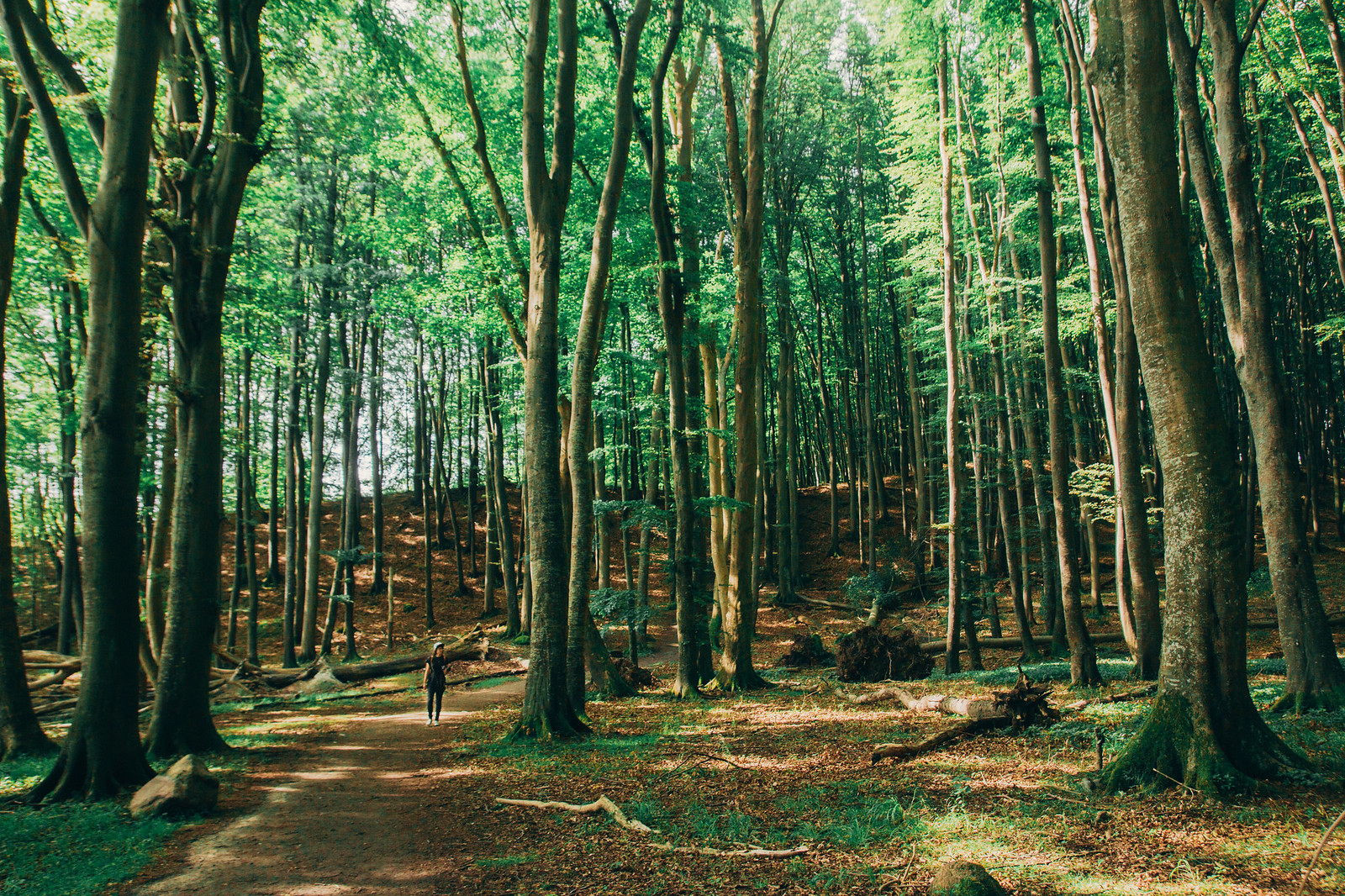
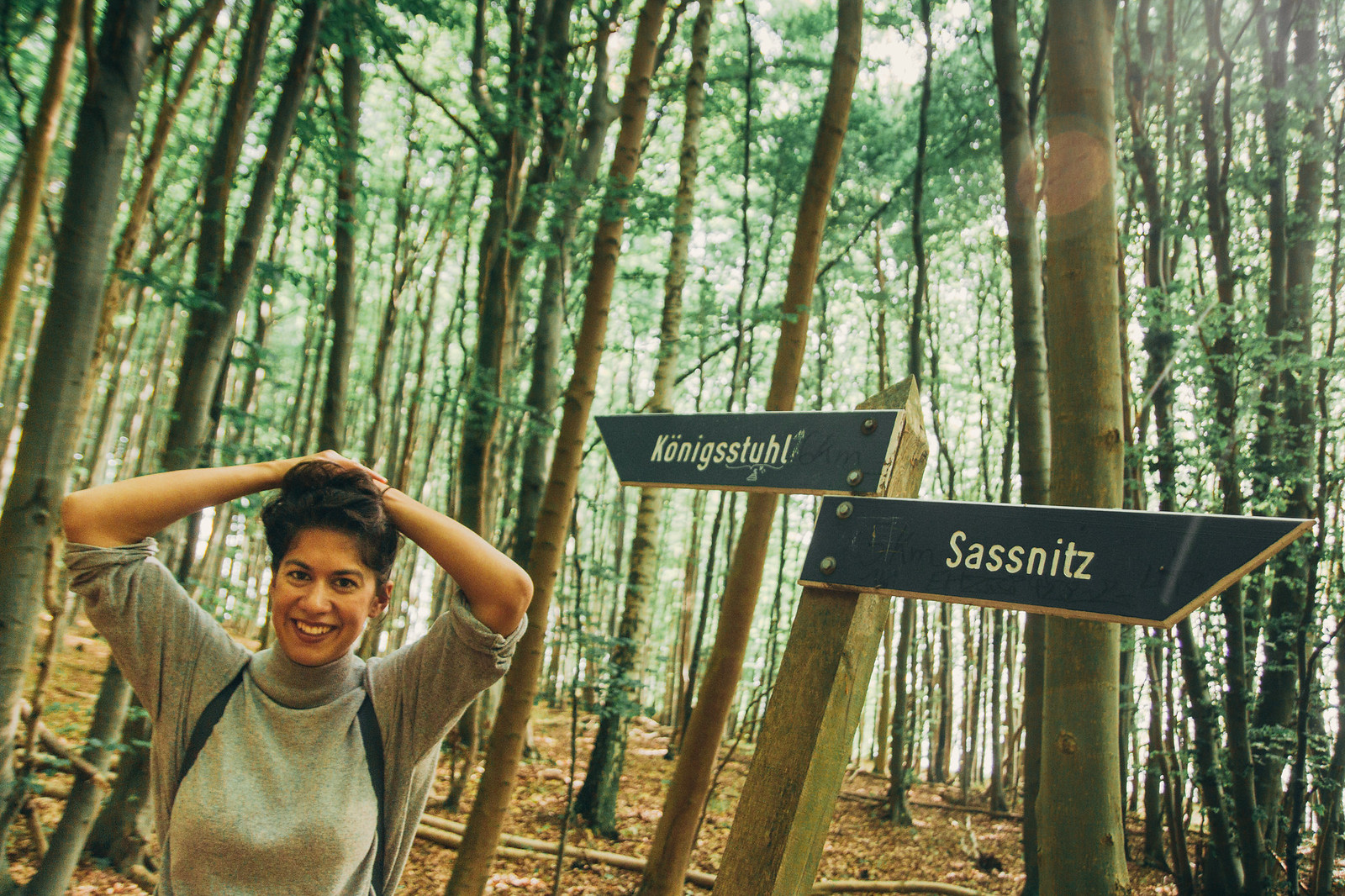
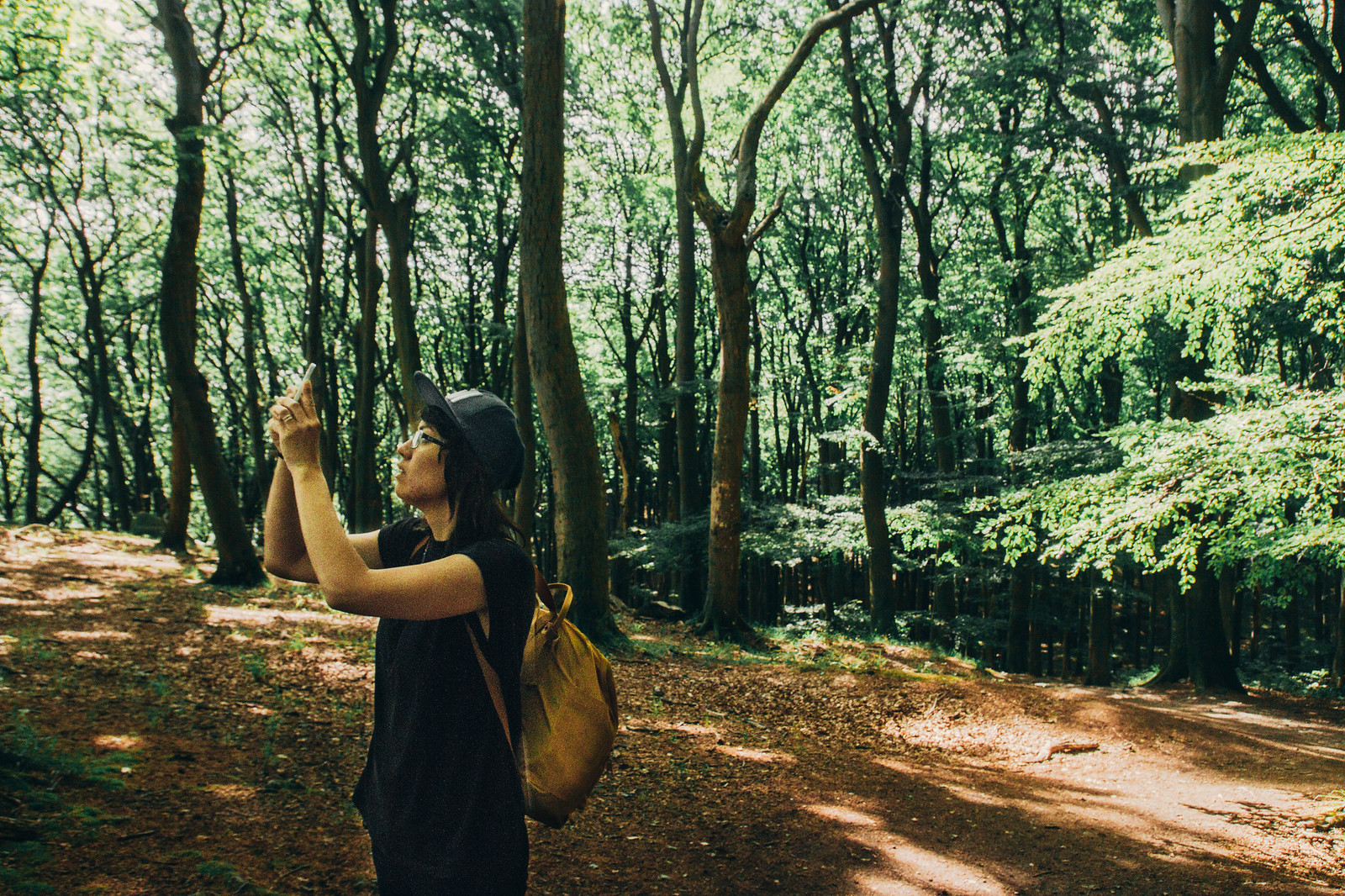
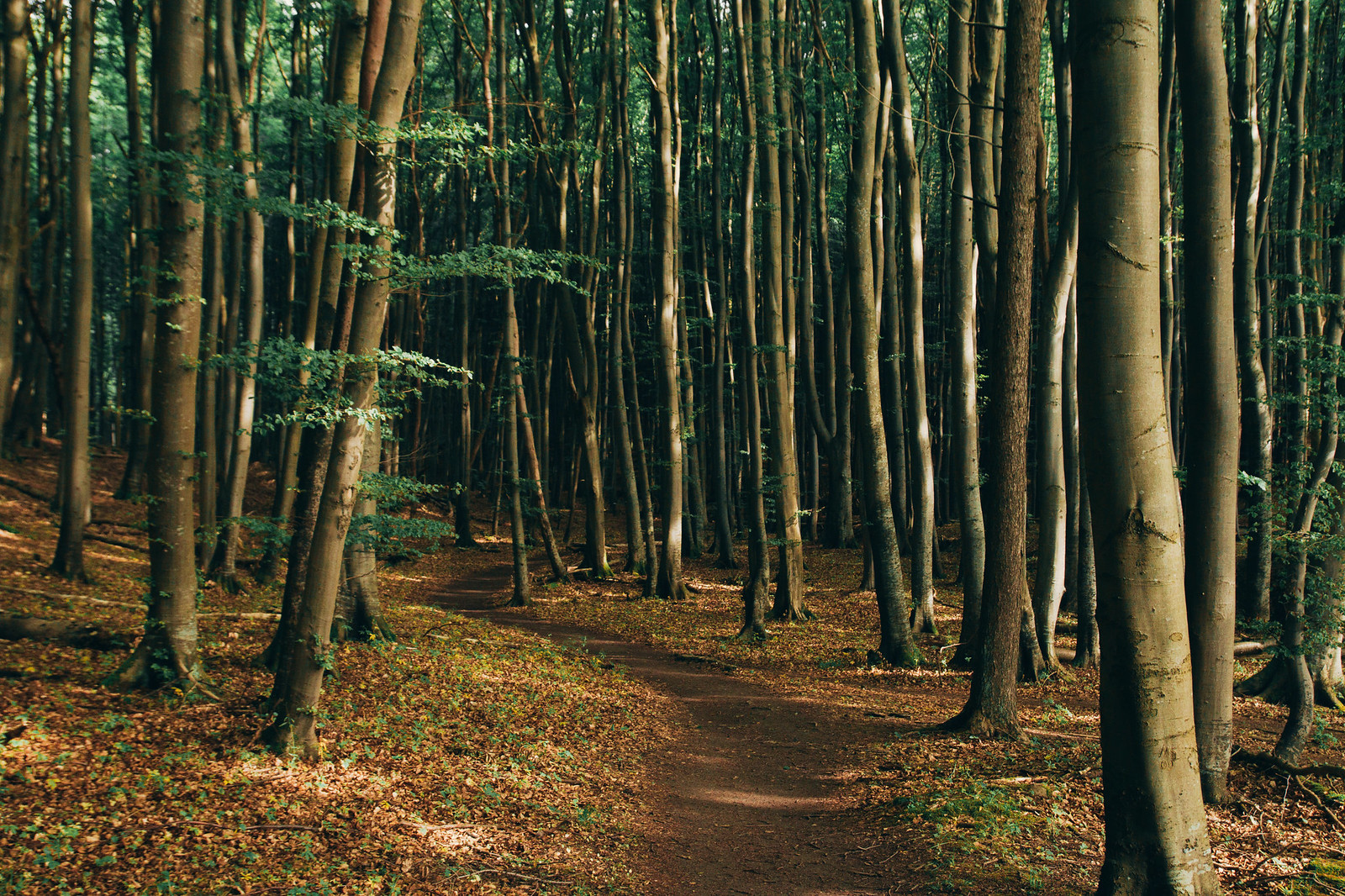
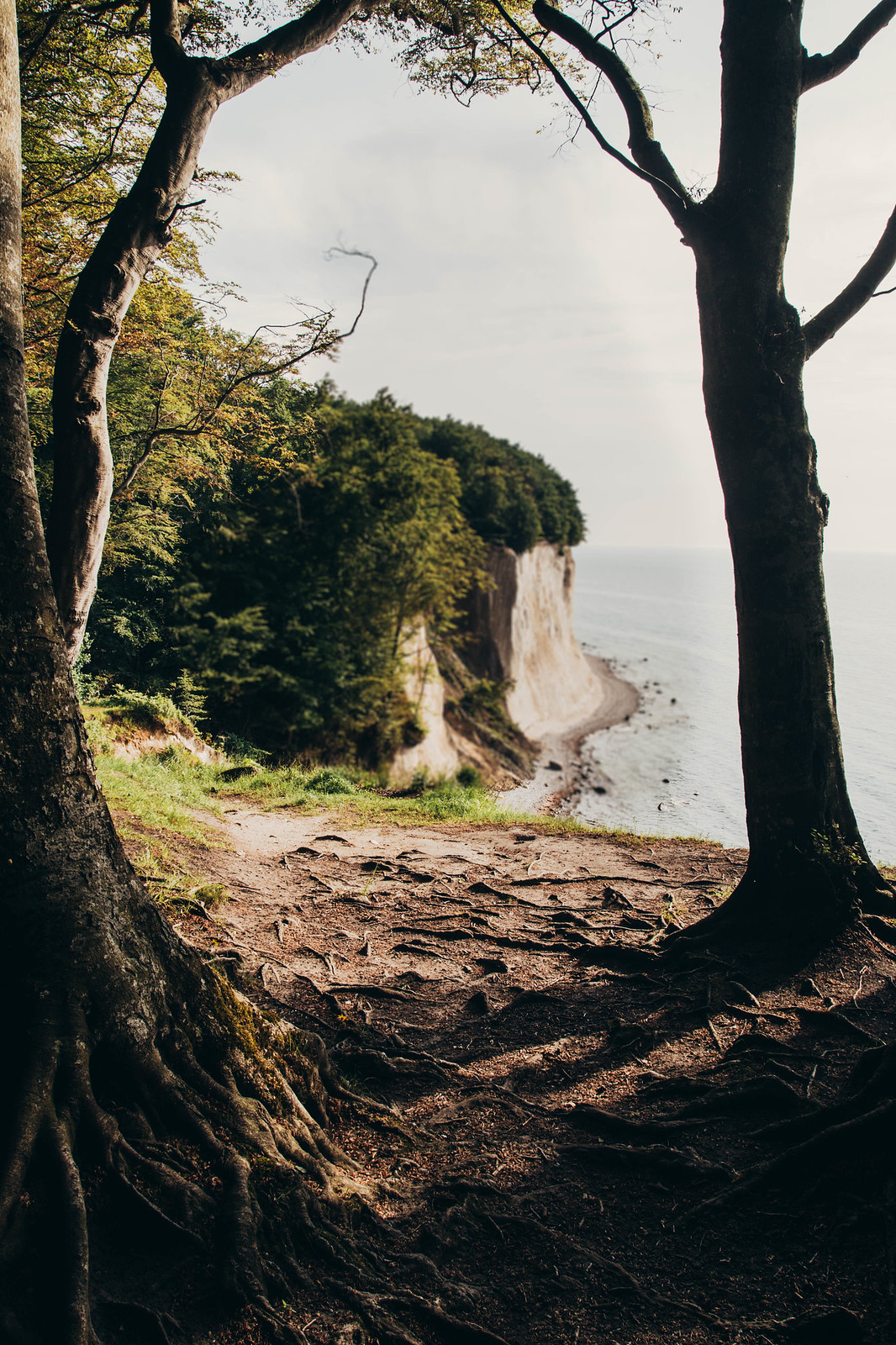
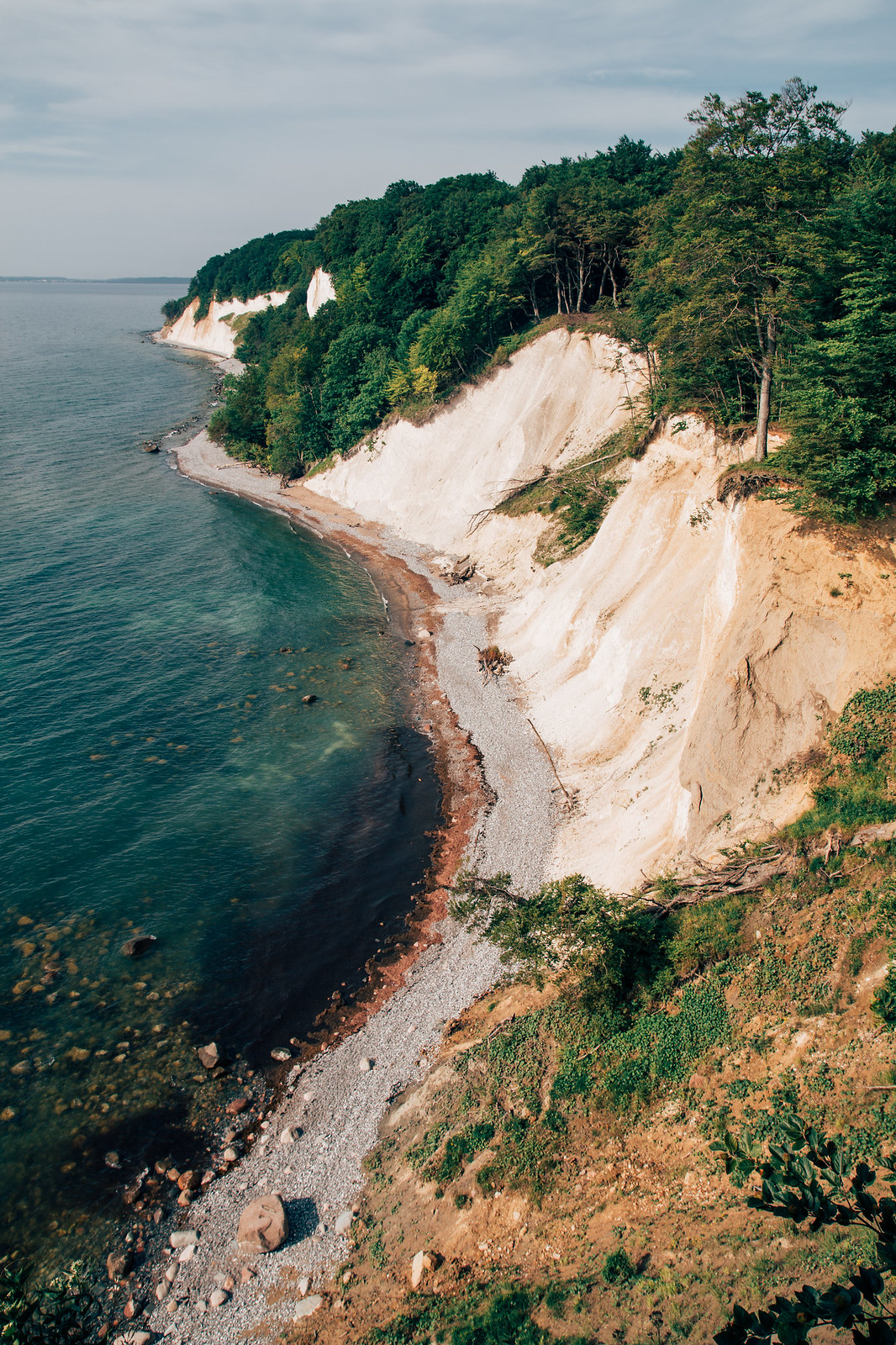
Along the elevated walking trail, there are three staircases that lead down to the pebble beach. We had heard that the staircase near Königstuhl was temporarily closed, so instead we went down at Kieler Ufer (Kieler shore) halfway through our walk to refresh ourselves in the ocean breeze and to admire the glorious parade of white chalk walls standing in vividly contrast to the dark blue water and the green, shadowy forest. Some of the worlds highest chalk cliffs actually occur in Jasmund National Park -as well as Møns Klint in Denmark, which together previously formed one single island - so it was no wonder, that this impressive sight had us pausing.
Before reaching National Park Centre Königsstuhl where you can learn more about Rügen's chalk coastline and its flora and fauna, and were we would finish our walk on top of Königstuhl itself, we made a stop at the Victoria-Sicht viewing point to observe the mighty chalk cliff from a distance.
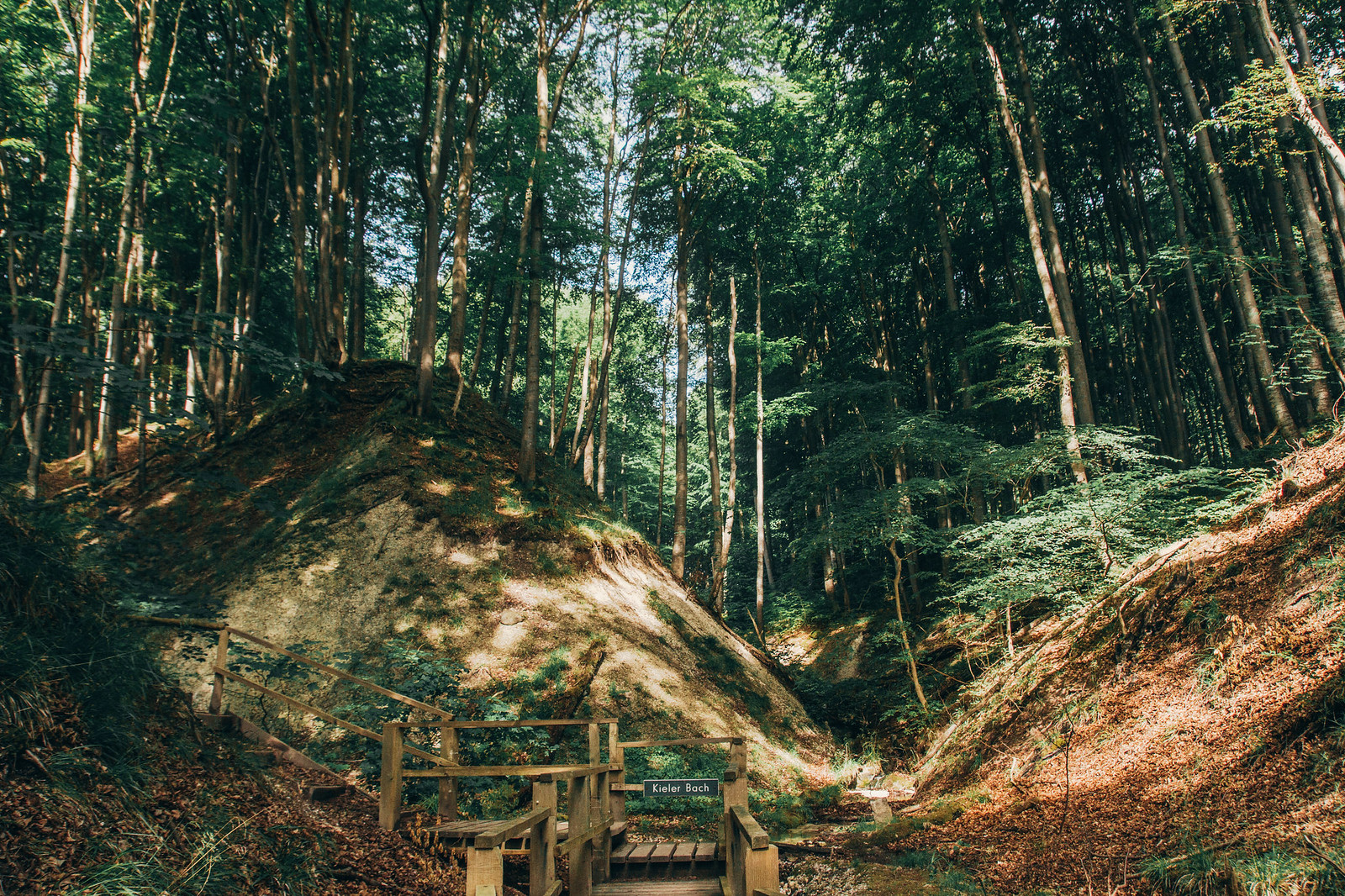

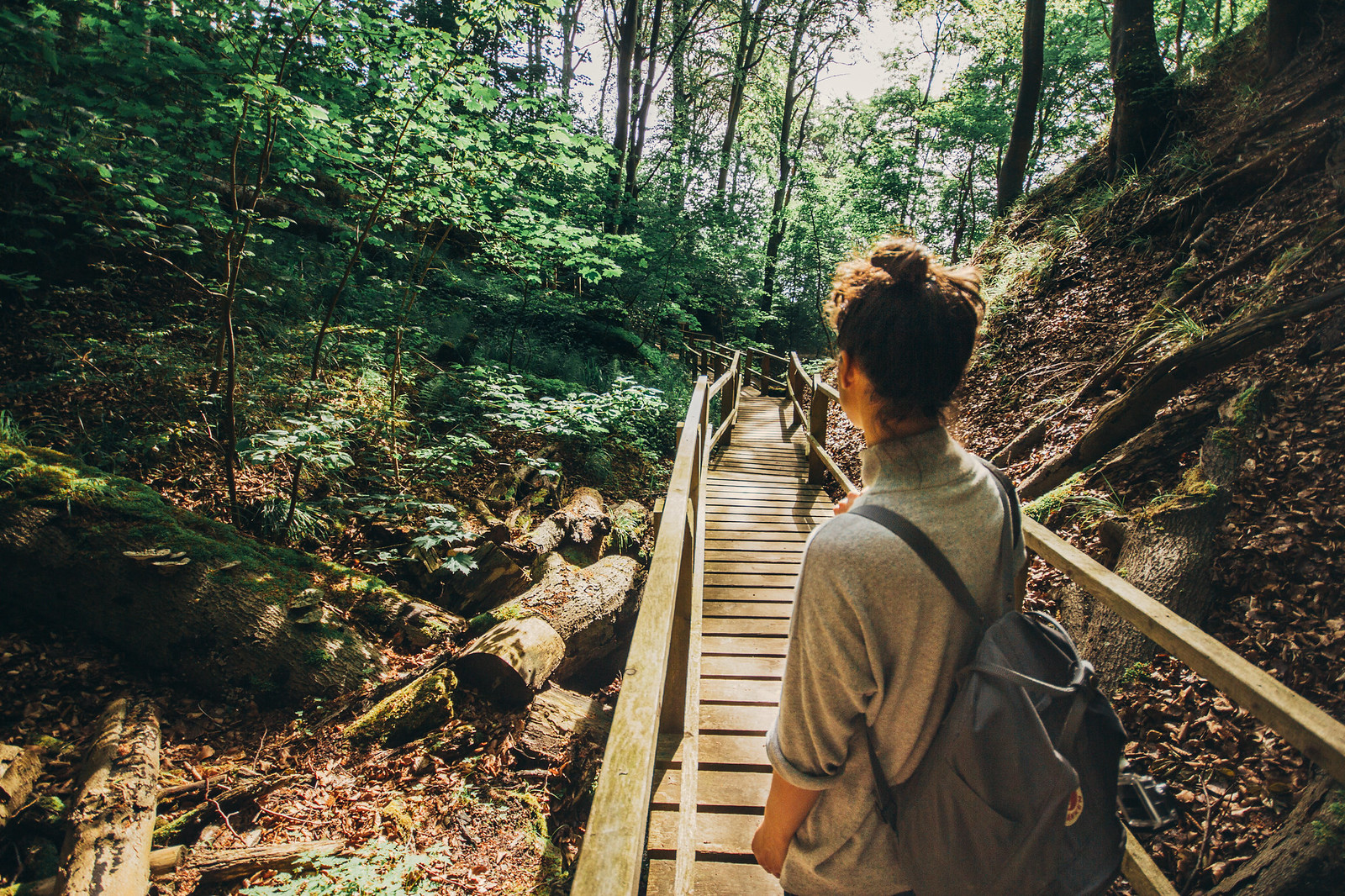
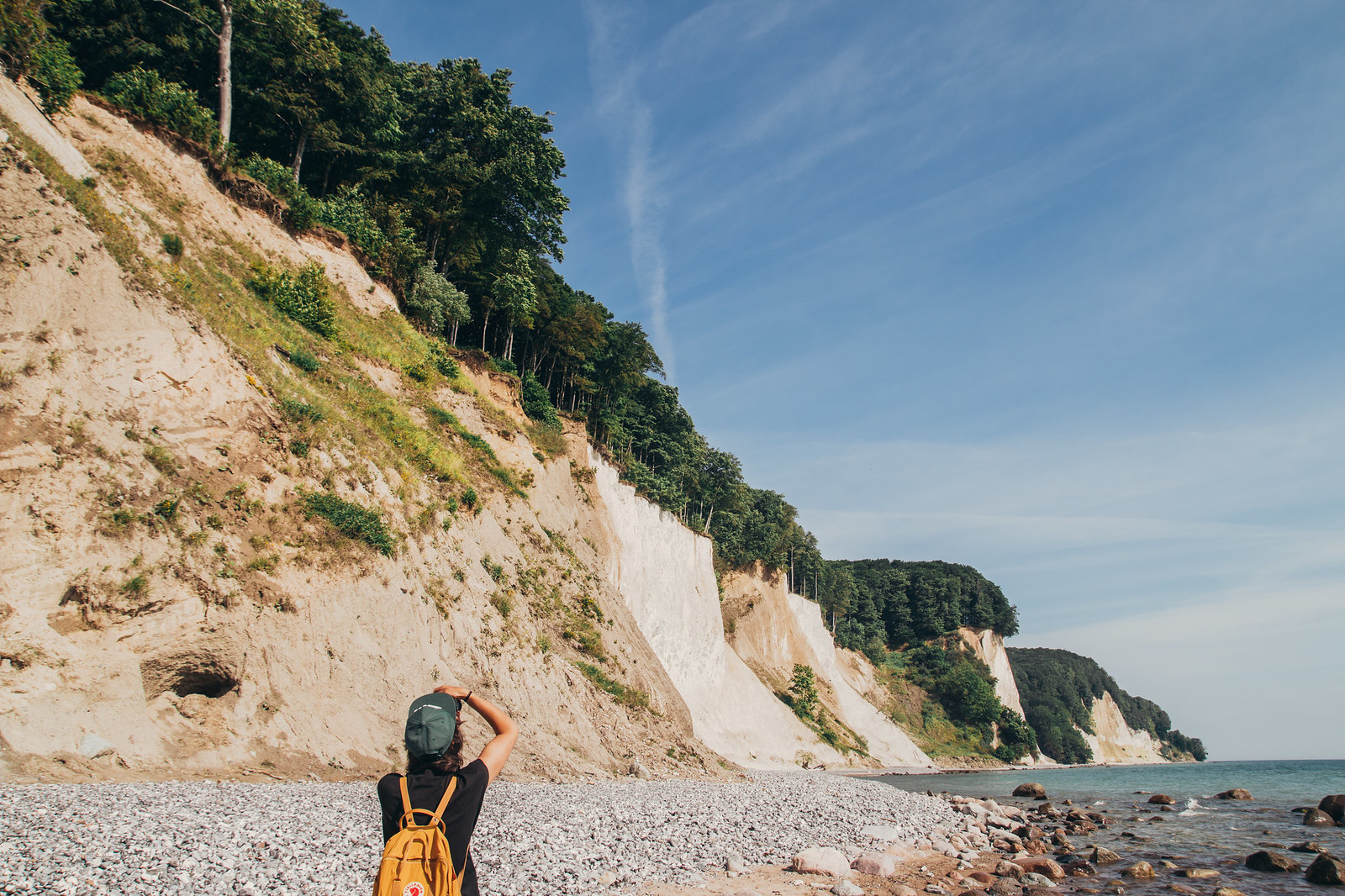
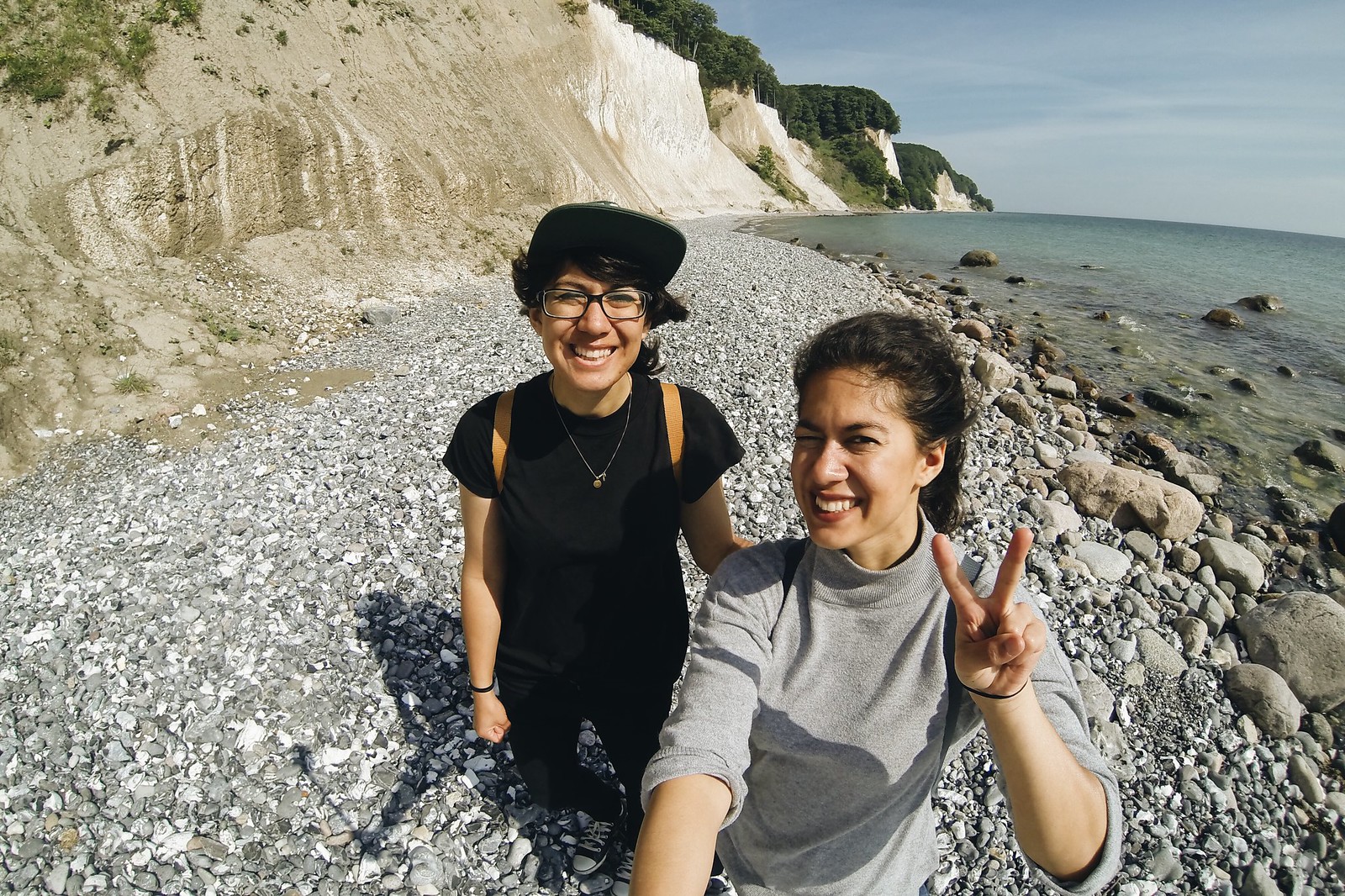
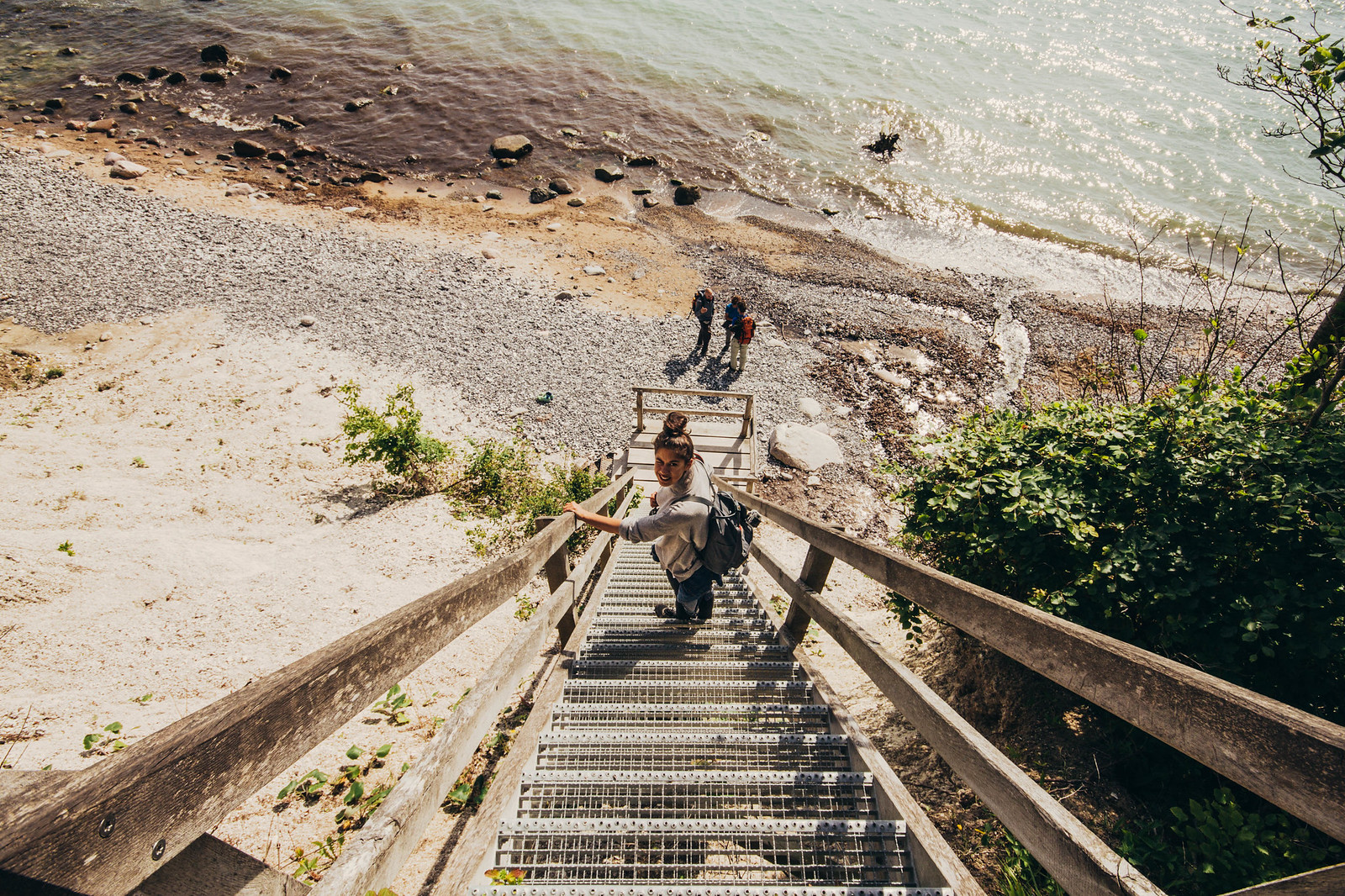
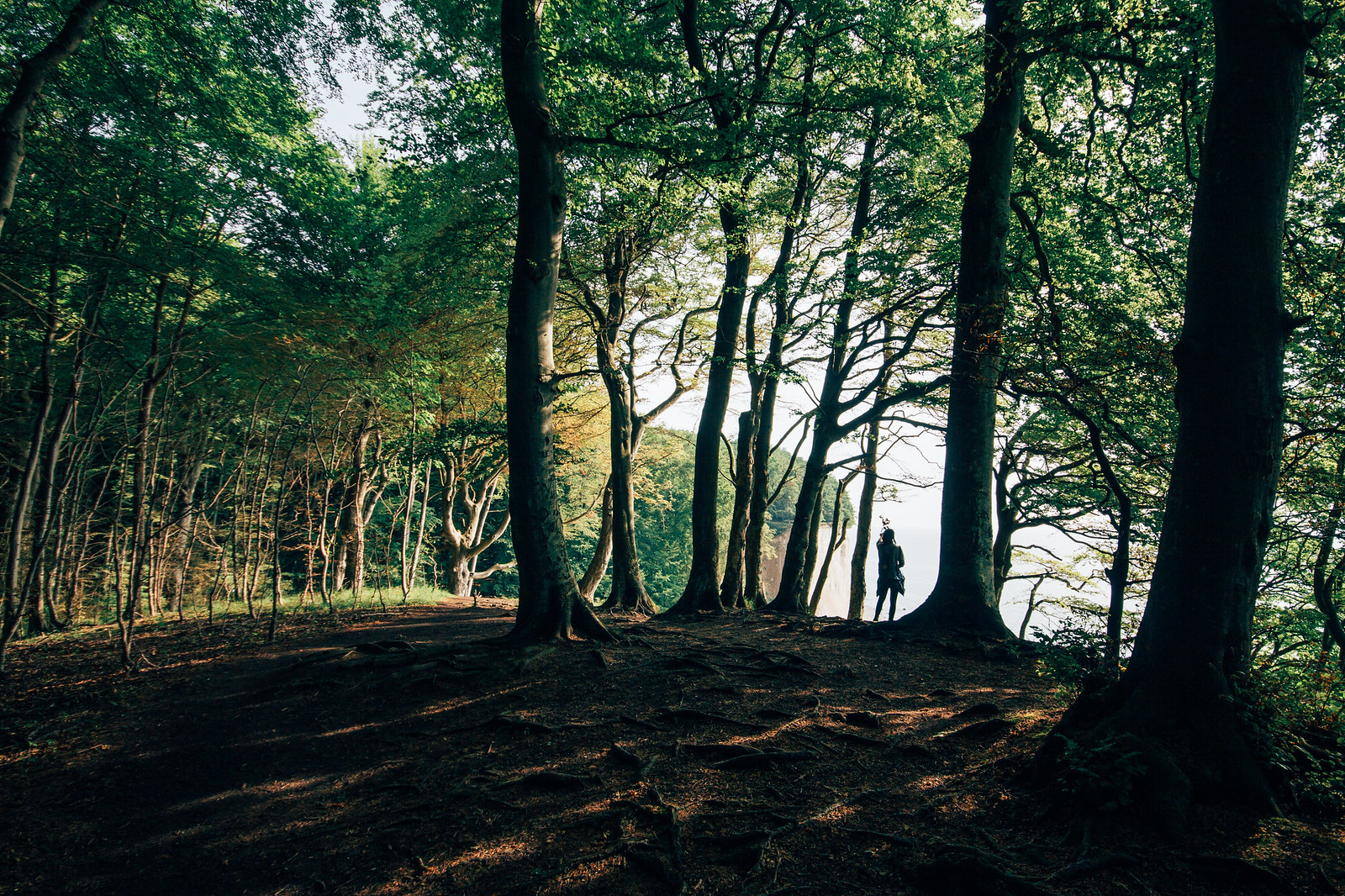
Cape Arkona
The remaining of the day was spent in the area around Cape Arkona, a 45 metre-high cape on the northern tip of Rügen. We parked the car in front of the little village of Putgarten and walked for 2 km to reach Cape Arkona, where numerous historic sights were waiting - including an old marine navigation tower, two lighthouses, two military bunkers and the remains of a Slavic fortress.
Two structurally different lighthouses were standing right next two each other and in some way reminded us of an old married couple. The smaller lighthouse Schinkelturm (1826) is the second oldest on the German Baltic Sea and was taken out of service to the advantage of its larger partner (1901). Together with the navigation tower, these buildings offer spectacular 360-degree panoramic views of Rügen upon a small fee.
Following the trail behind the navigation tower we were met by a four-faced wooden statue representing Svantevit, the mightiest God worshipped by the Slavic tribe Rani. Continuing over the small hill we stepped directly onto the remains of the old temple fortress, Jaromarsburg, which served as a religious site for the Rani from the 9th to the 12th century until the Danish King Valdermar conquered and converted Rügen to Christianity. Since we had forgotten to bring cash and missed out on the perfect birdsview of Rügen and the Baltic Sea from the towers viewing platforms, we instead enjoyed an outmost beautiful overview of the entire area from within the ramparts of the medieval fortification.
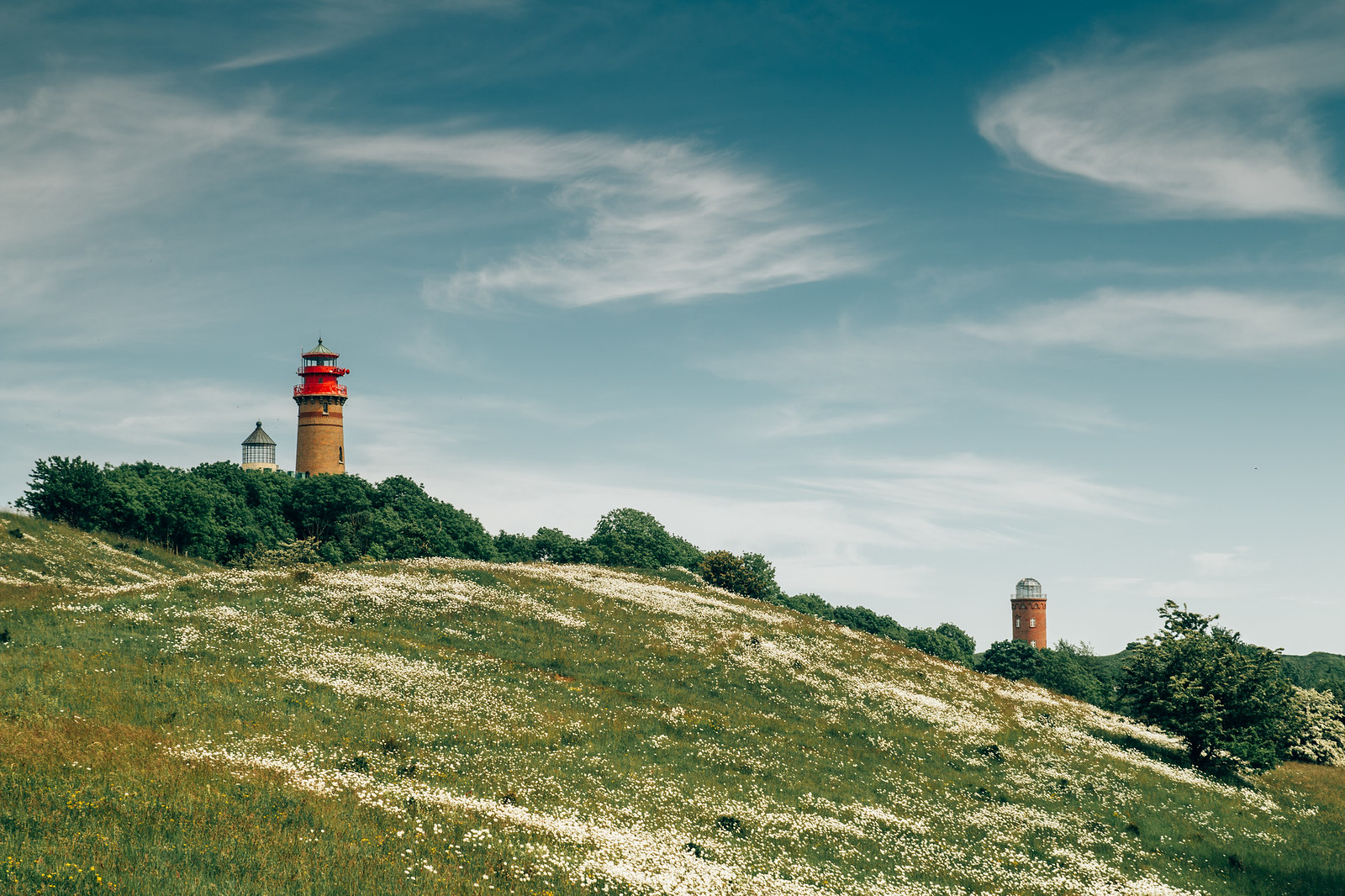


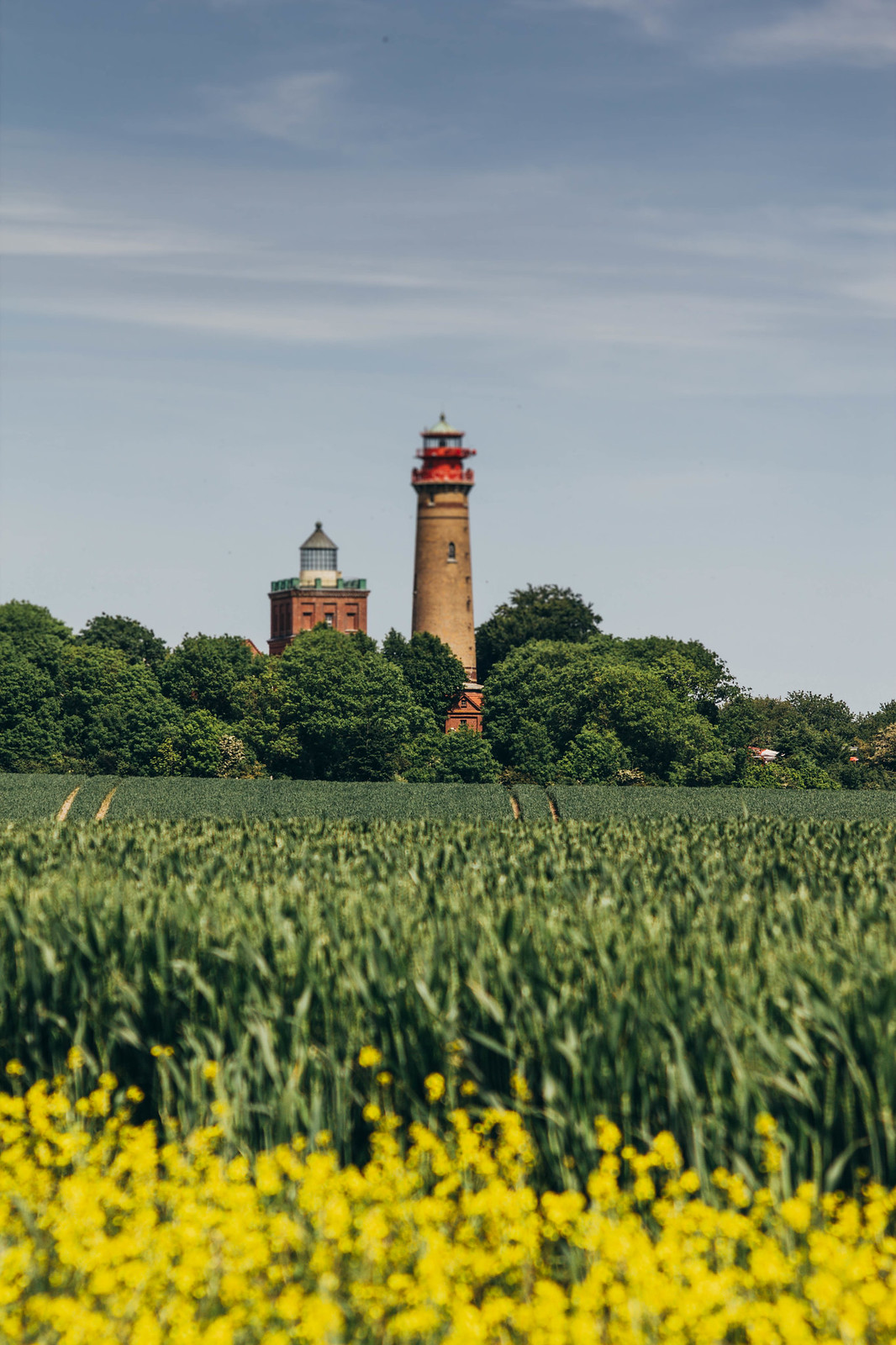
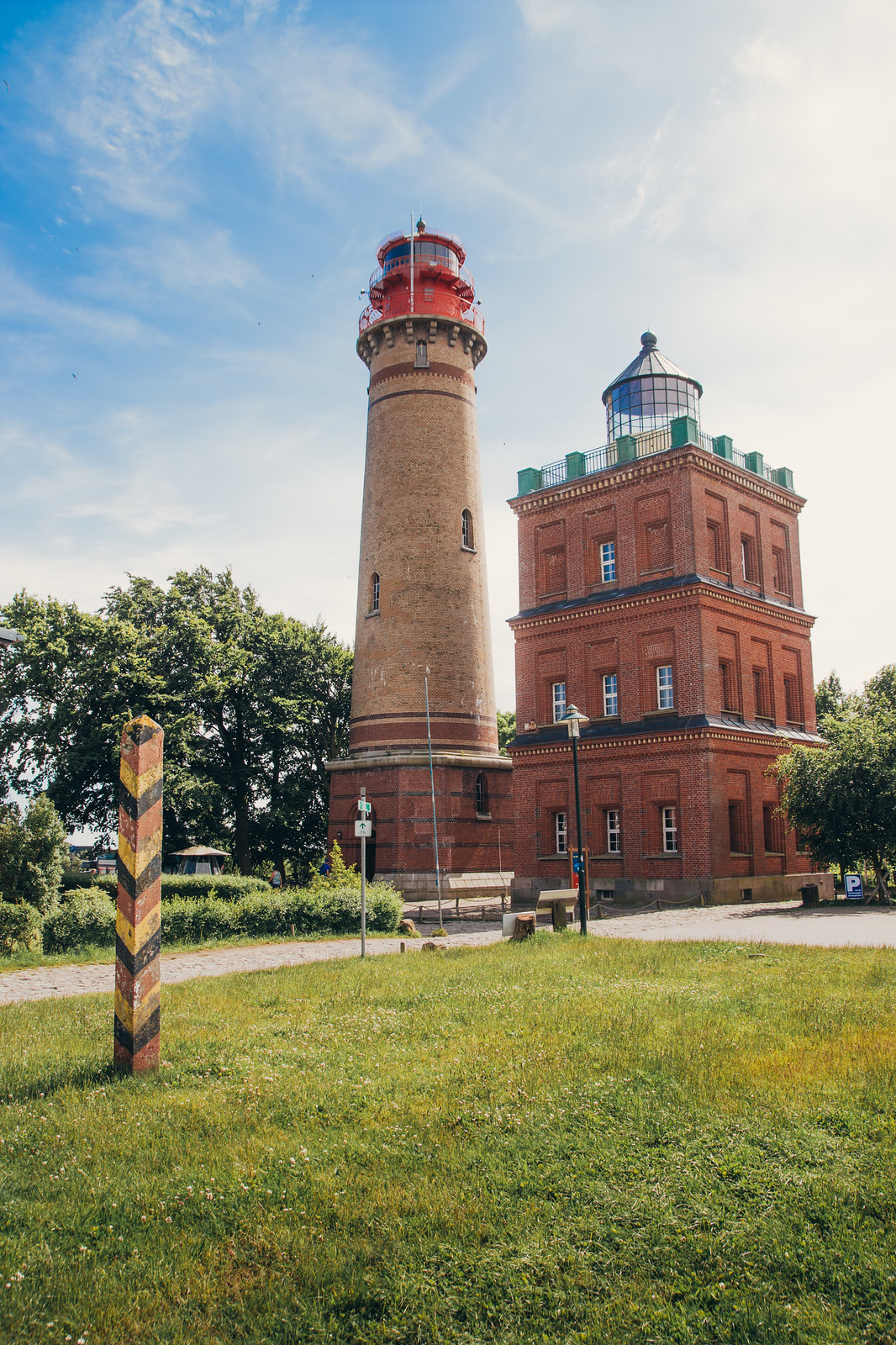
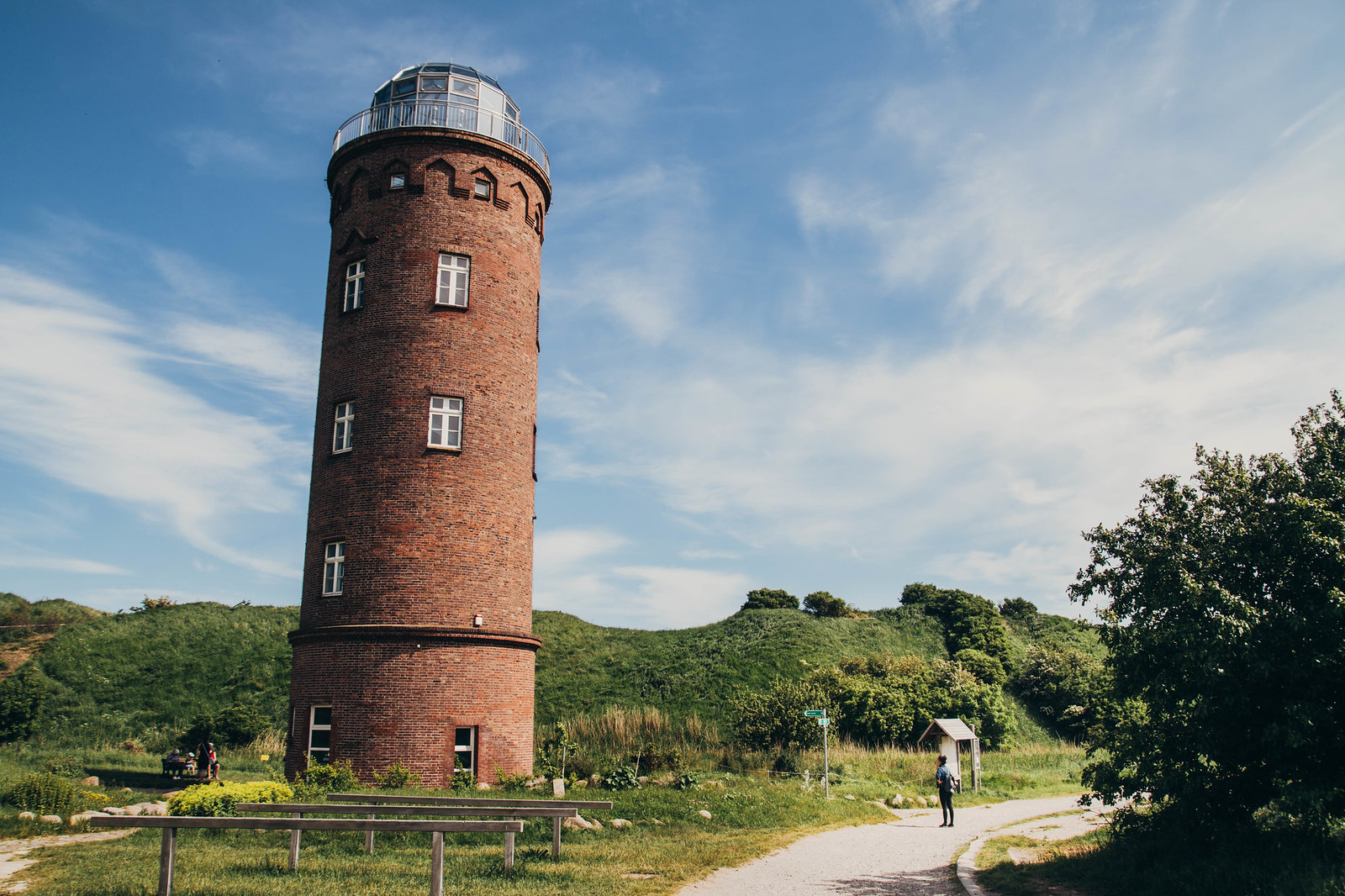
West of Cape Arkona is the Königstreppe (King’s Staircase), a beautiful 230-step wooden staircase leading down the steep cliff. Königstreppe was unfortunately closed so instead we went down a zig-zagging staircase on the cliffs of Gellort a little further away. From the top of Gellort we immediately spotted Siebenschneiderstein, a 165-ton glacial erratic boulder nicely tugged in to the ground of the grassland beach and marking the northernmost point of Rügen. Hurrying down the staircase we imagined ourselves dazing in the sun on top of the impressive boulder, however, as we reached the bottom a pair of love-birds had already conquered the erratics. Although the largest, Siebenschneiderstein was not alone as multiple big rocks were scattered all along the beach, making up the perfect jump route for us to enjoy the coastal line by other means. South of the remnants of the ramparts at Jaromarsburg is the Veilchentreppe ("Violet Staircase"), a descent to a different beach made entirely up by big rocks and peble stones. From here we initially planned to walk south along the coast to visit the tiny fishing village Vitt, but as the sky started to get dense and the air cooler, we decided to leave this experience for another visit.
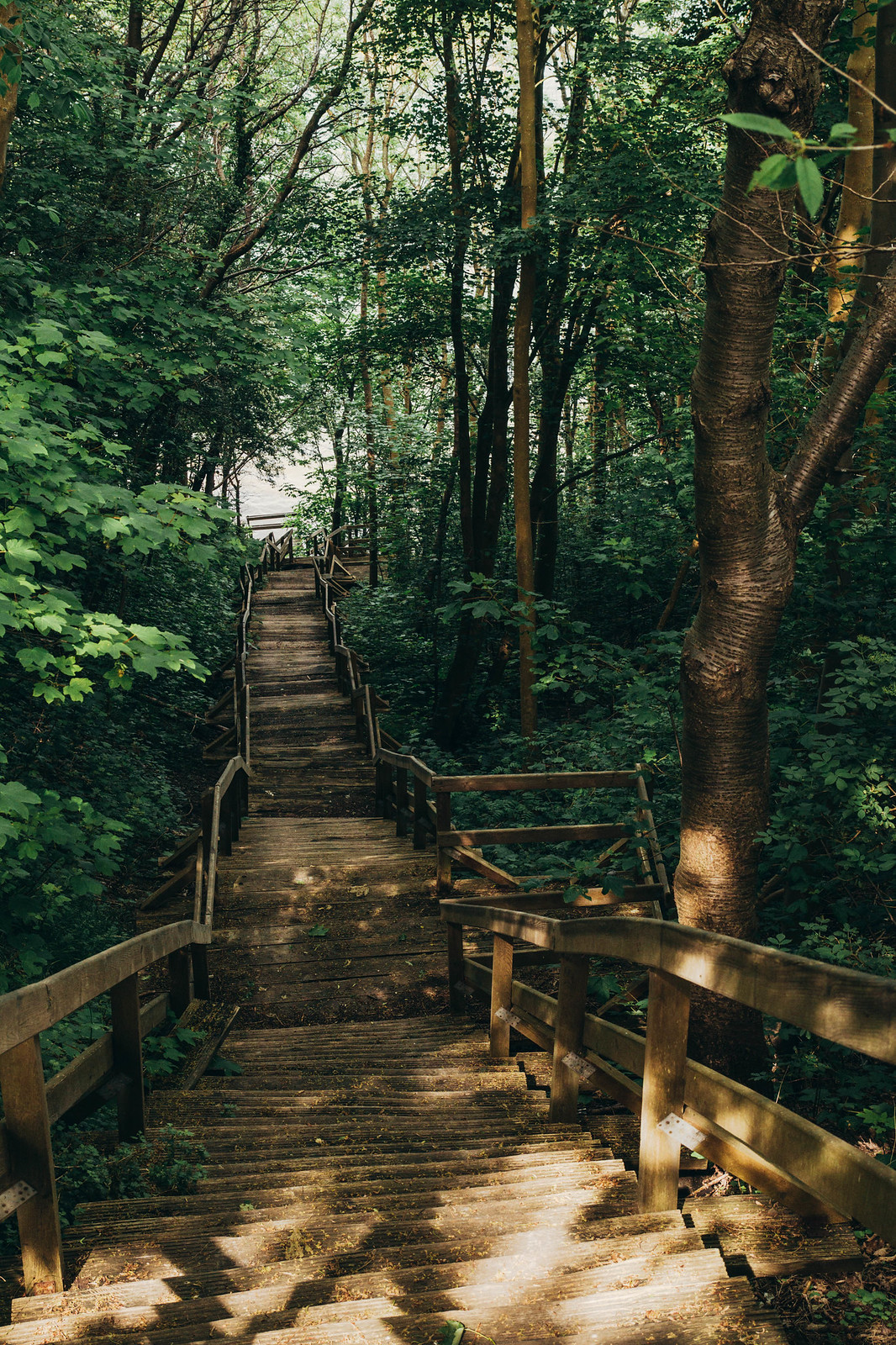

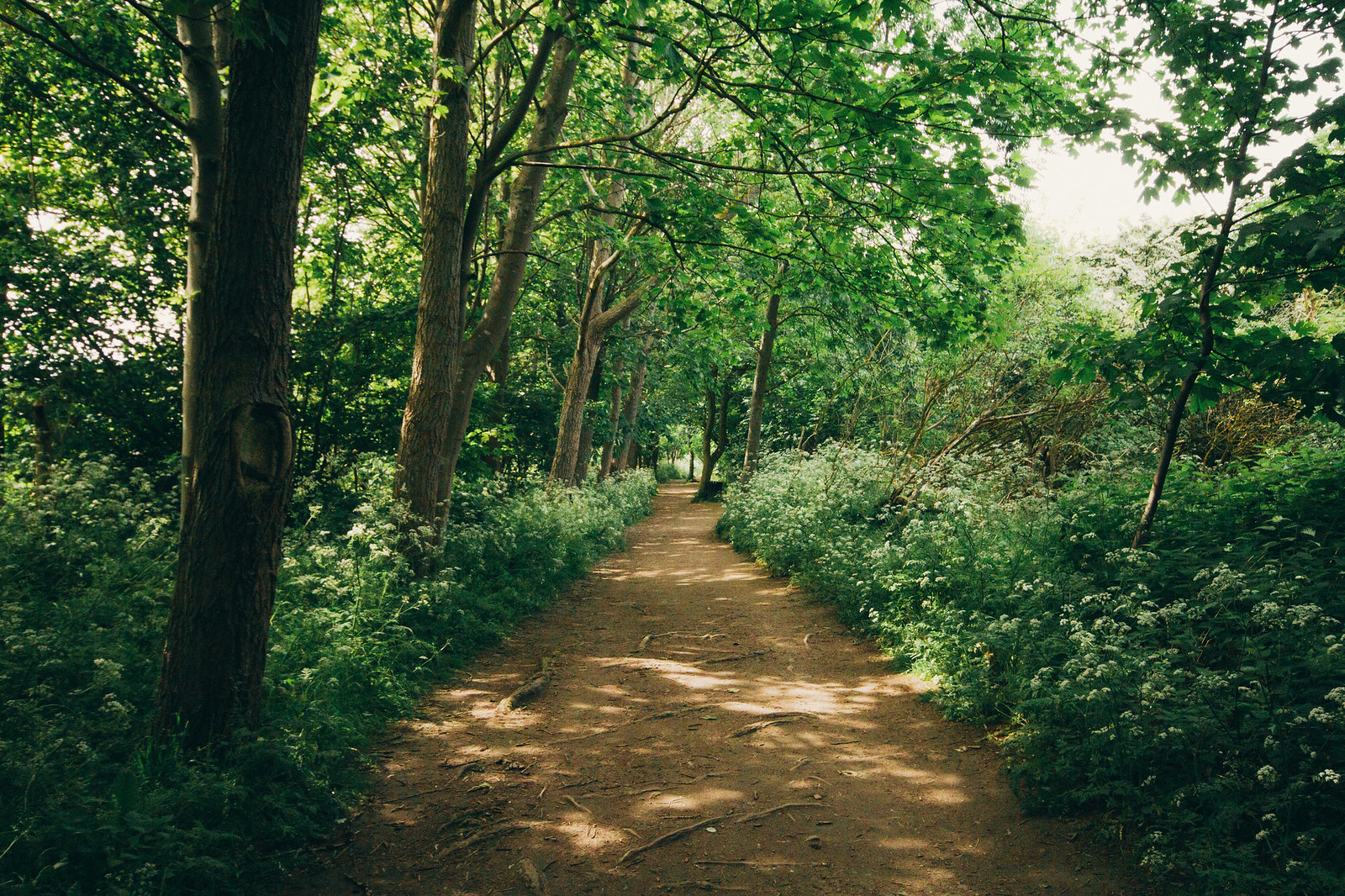
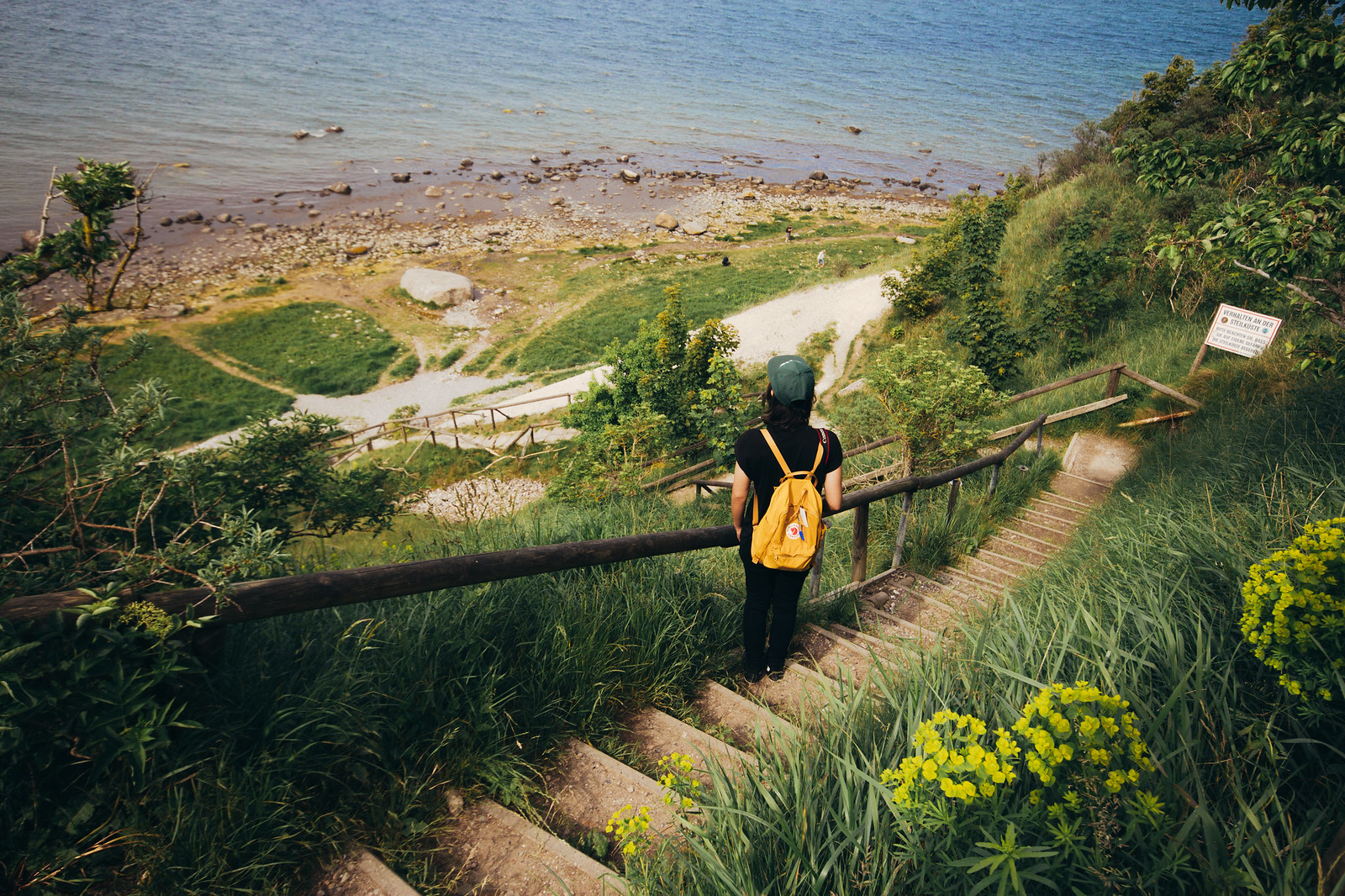

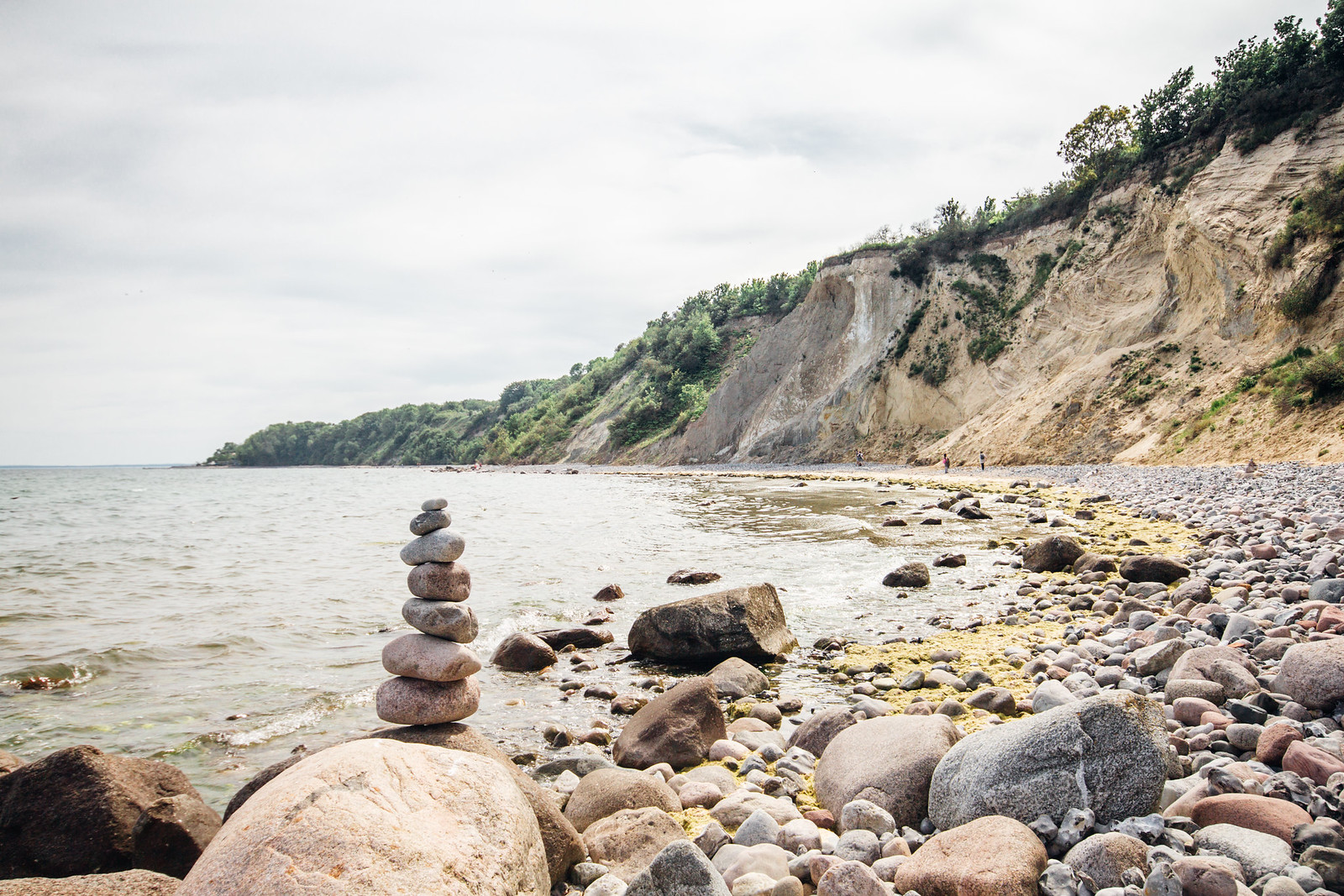
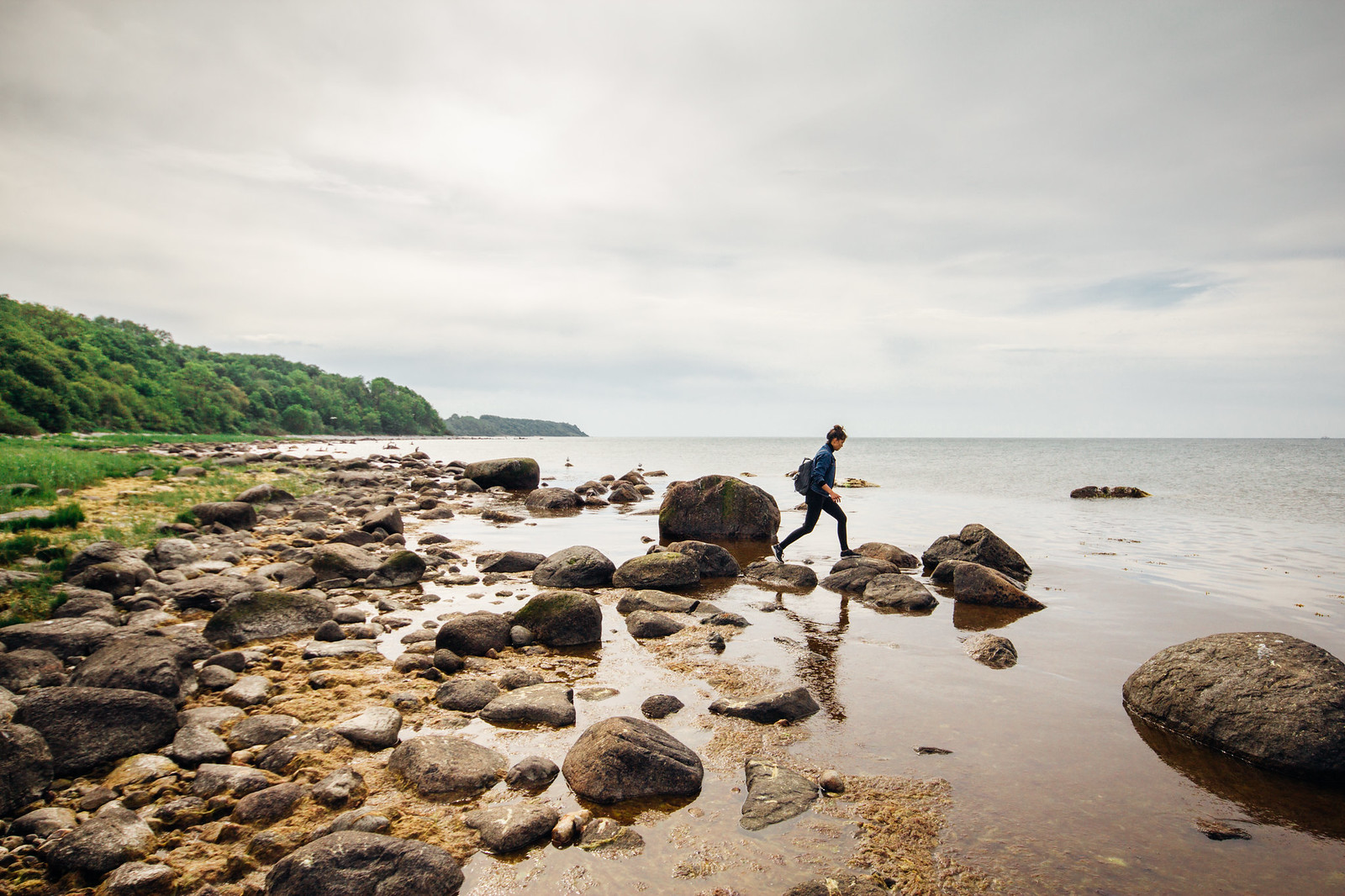
Collaboration information
The trip is made in collaboration with the German National Tourist Board (GNTB) and is part of the Danish promo campaign EinSmuttur lanched by the GNTB and partners in Northern Germany. The campaign runs from June 2017 until March 2018 and you can find inspiration as well as special offers on the website Einsmuttur.germany.travel
